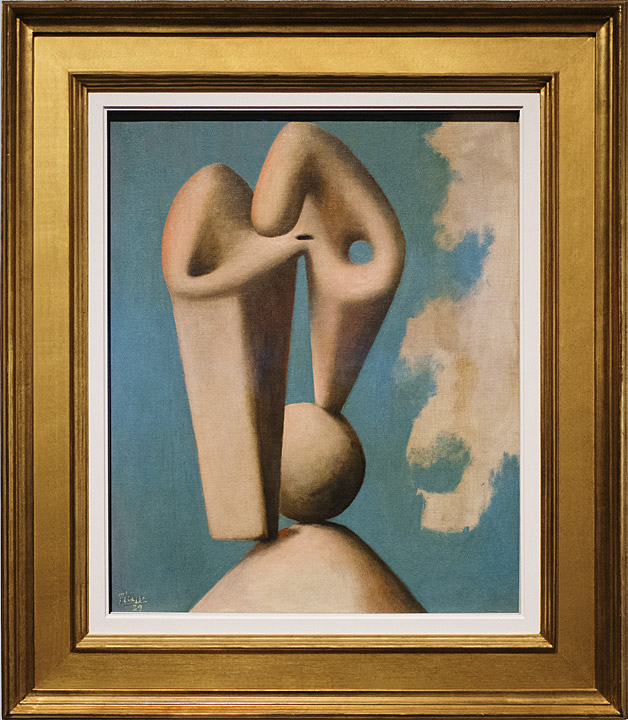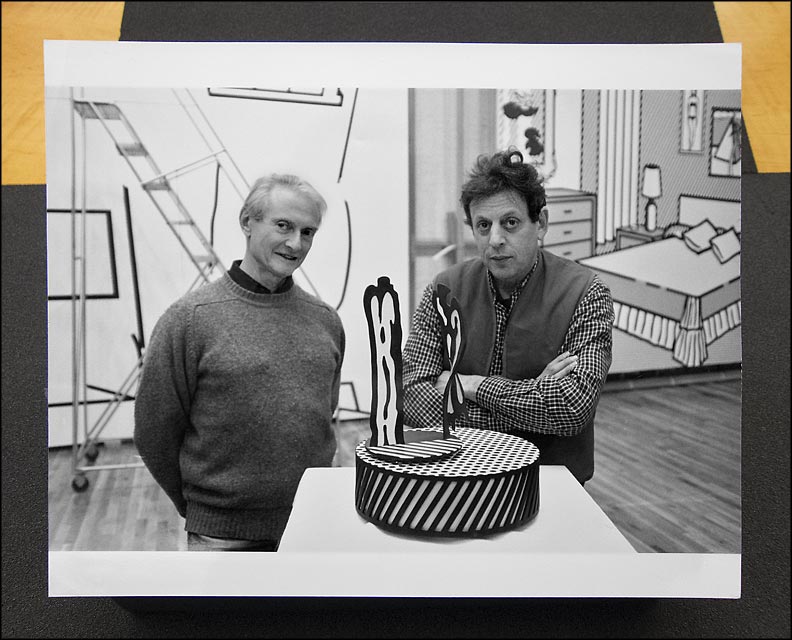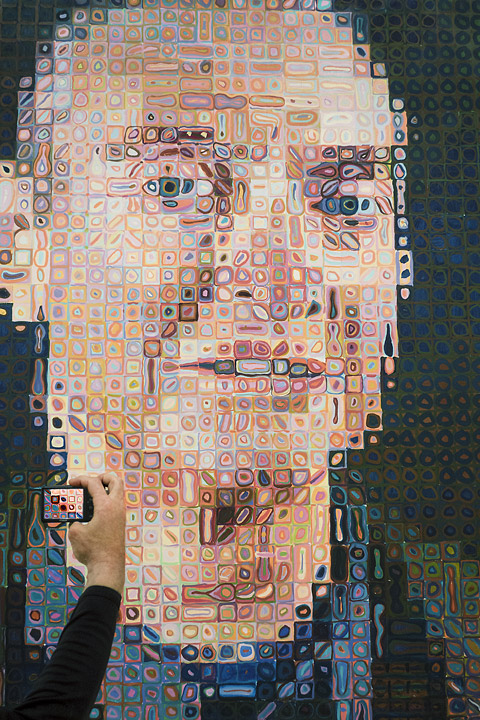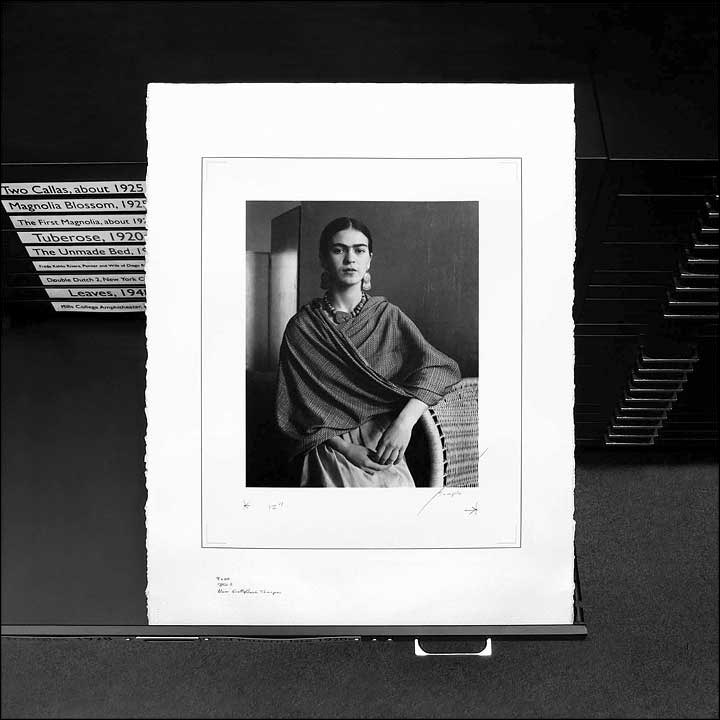|
||||||||||
The
kinds of connections among artists as represented
in these photographs include: |
||||||||||
| Robert
Heinecken—Marcel Duchamp—Eadweard Muybridge |
||||||||||
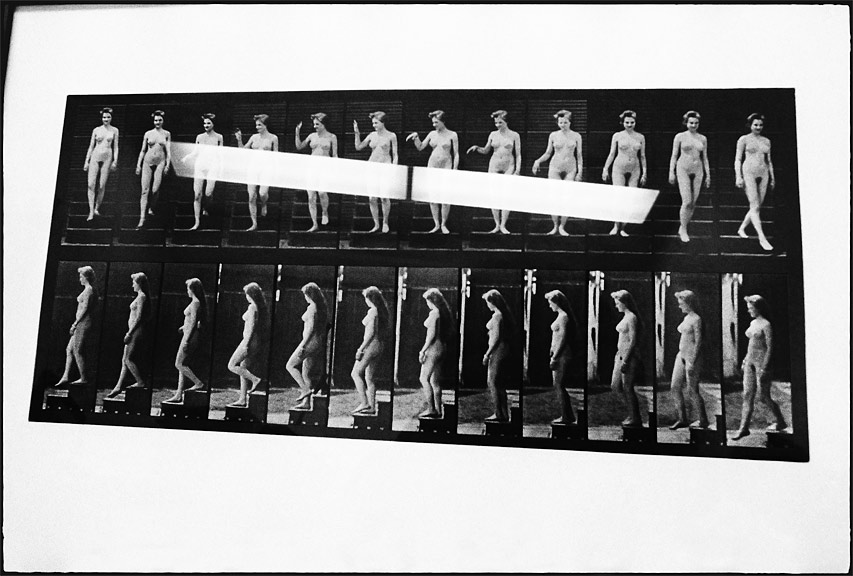 Digital-pigment print, 16"x12" Robert Heinecken’s office, UCLA, 1974, |
Robert
Heinecken’s Muybridge
print (Eadweard Muybridge, 1887)
|
|||||||||
| Marcel Duchamp—Walter
Arensberg |
||||||||||
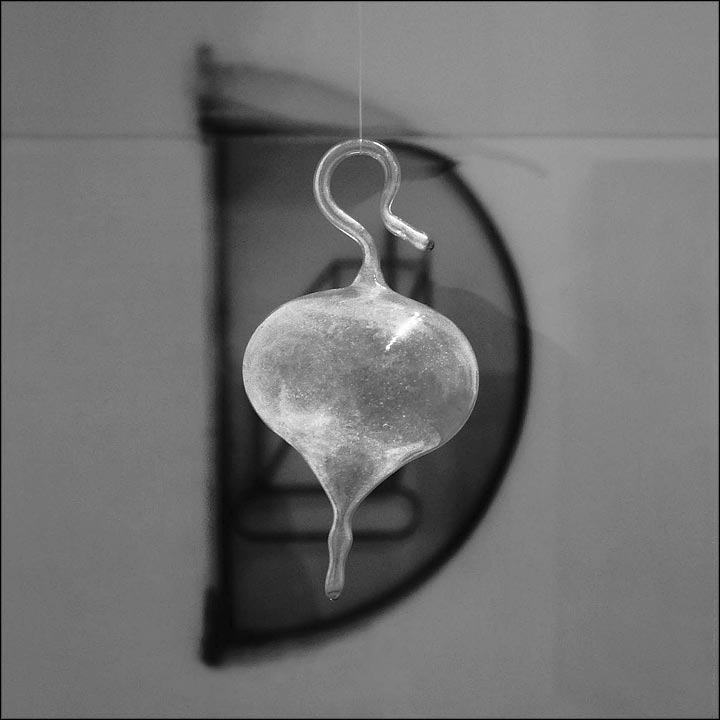 Digital-pigment print, 12"x16" Philadelphia Museum of Art, 2006 |
50ccs
of Paris Air |
|||||||||
| Marcel Duchamp—Guillaume
Apollinaire |
||||||||||
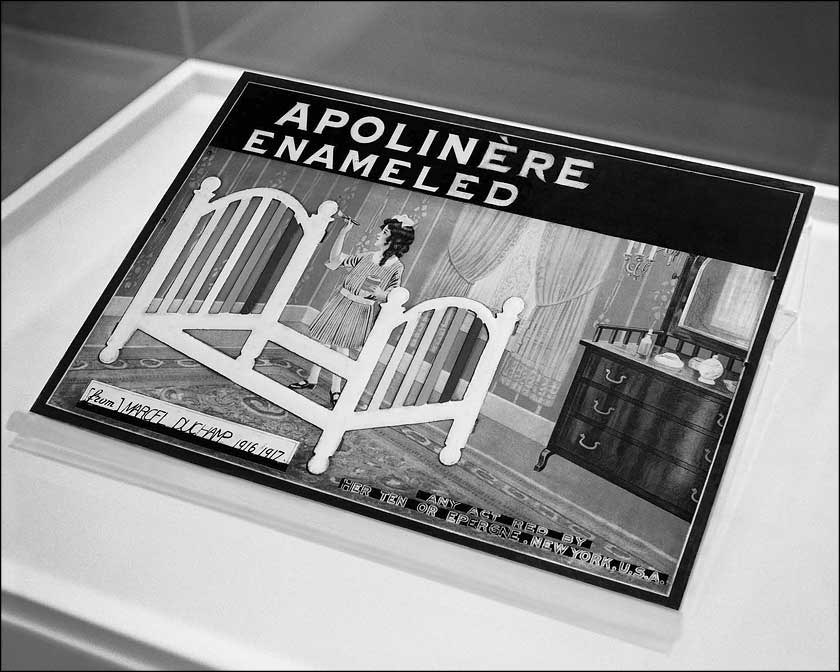 Digital-pigment print, 16"x12" Museu d’Art Contemporani de Barcelona, 2004 |
Apolinère
Enameled
|
|||||||||
| Joseph Cornell—Guillaume
Apollinaire |
||||||||||
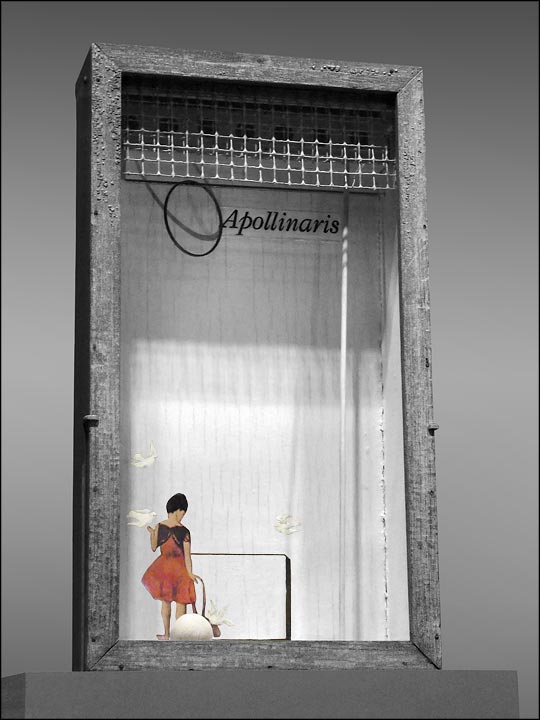 |
Variétés
Apollinaris (for Guilliame Apollinaire) (Joseph Cornell, 1953) Figure from Picasso’s Les Saltimbanques |
|||||||||
| Digital-pigment
print, 12"x16", 2008 |
||||||||||
| Dan Flavin—Guillaume
Apollinaire |
||||||||||
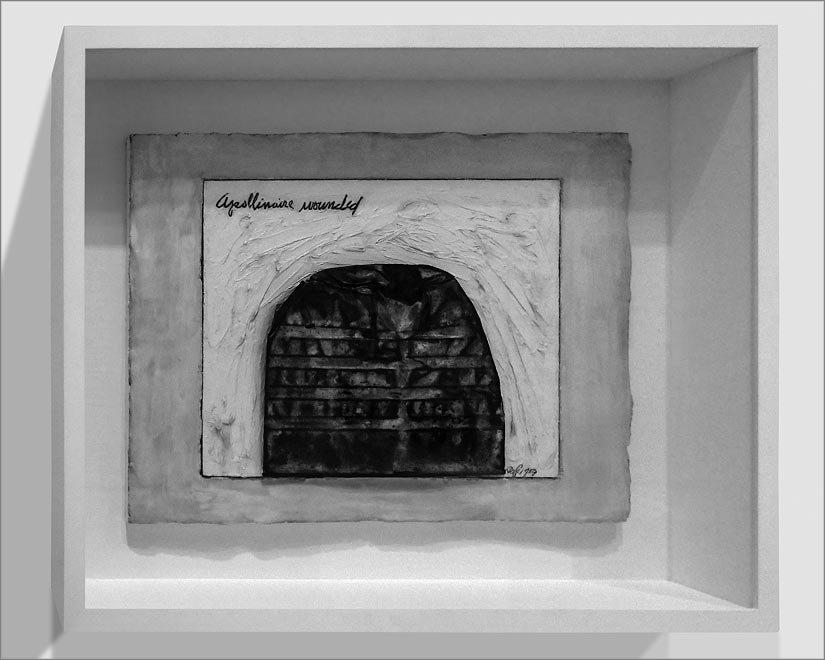 Digital-pigment print, 16"x12" |
Apollinaire
Wounded (Dan Flavin, 1959–1960) |
|||||||||
| Dan Flavin—Vladimir
Tatlin |
||||||||||
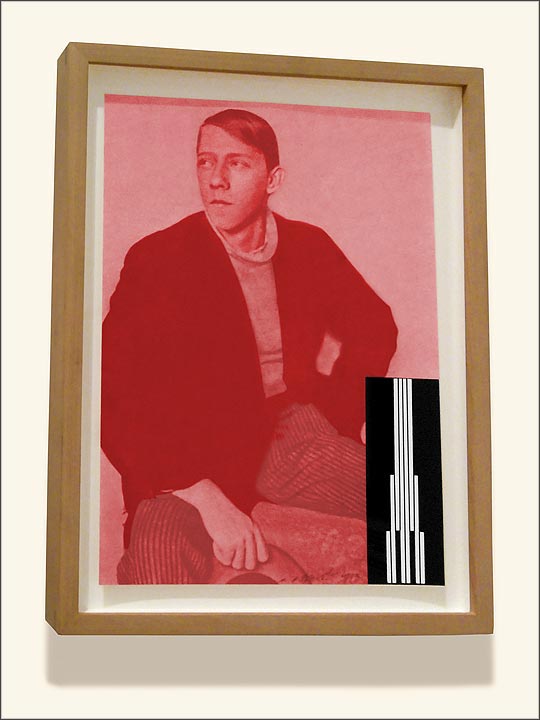 Digital-pigment print, 12"x16" |
Four
Monuments for V. Tatlin by Dan Flavin Leo Castelli Gallery Poster, 1970 |
|||||||||
| Boetti—Duchamp,
Castelli, Schwarz, Nauman, Weiner |
||||||||||
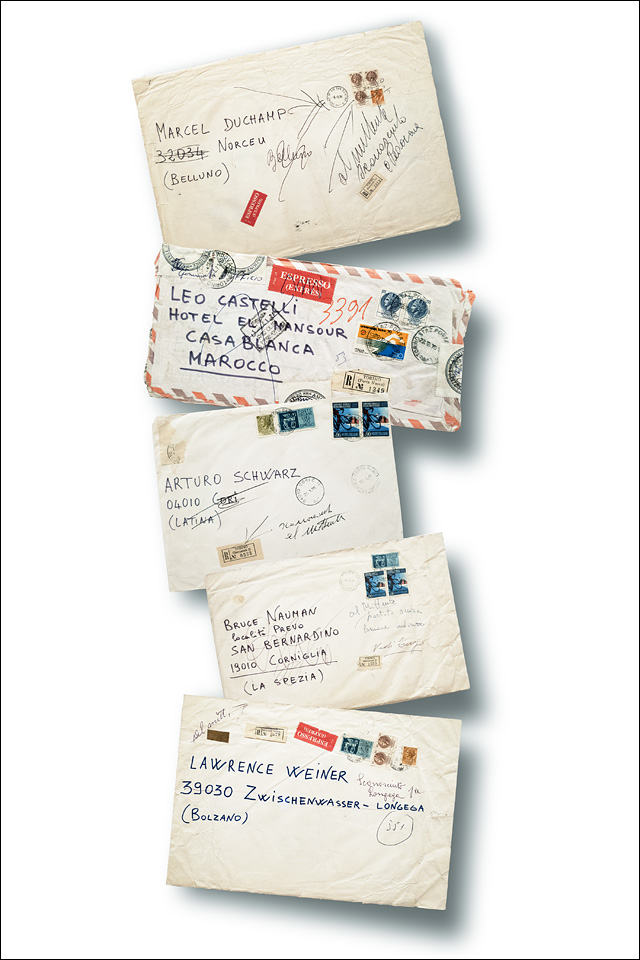 Digital-pigment print, 12"x16" Museum of Modern Art, NYC, 2016 |
Postal Voyages, Alighiero Boetti, 5 of 19 envelopes addressed to Marcel Duchamp, Leo Castelli, et al., 1969-70
|
|||||||||
| Francis Picabia—Guillaume
Apollinaire |
||||||||||
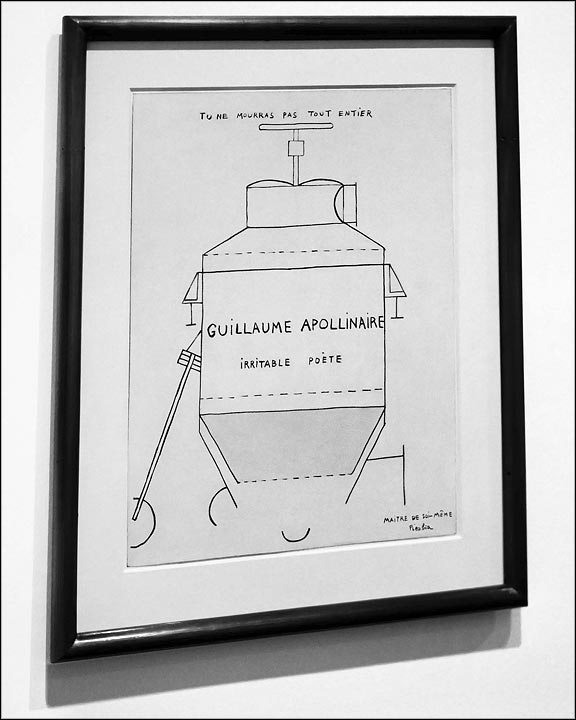 Digital-pigment print, 12"x16" Museu d’Art Contemporani de Barcelona, 2004 |
Picabia Portrait of Apollinaire, 1917
|
|||||||||
| Francis Picabia—Alfred
Stieglitz |
||||||||||
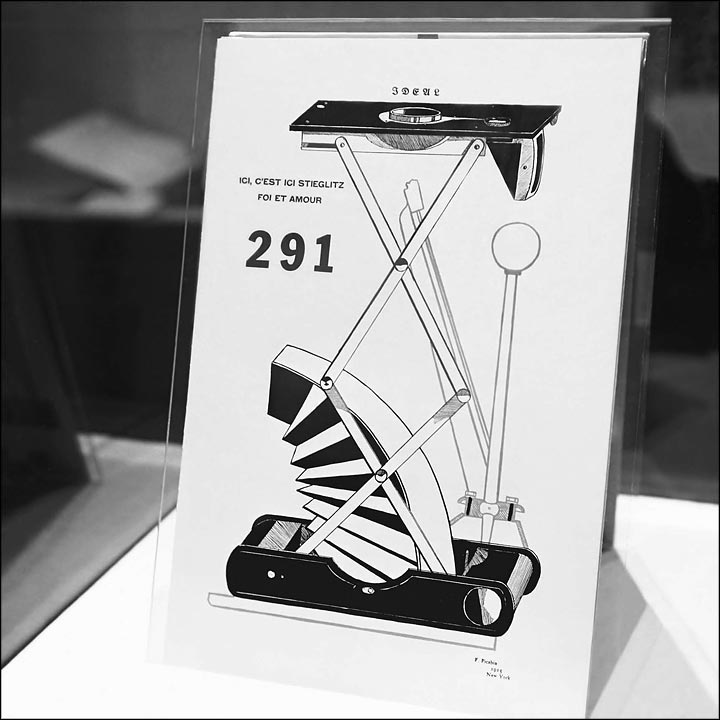 Digital-pigment print, 12"x16", The Palace of the Legion of Honor, San Francisco, David Logan Collection, 2001 |
Picabia Portrait of Stieglitz, 1915
|
|||||||||
| Sherrie Levine—Alfred
Stieglitz |
||||||||||
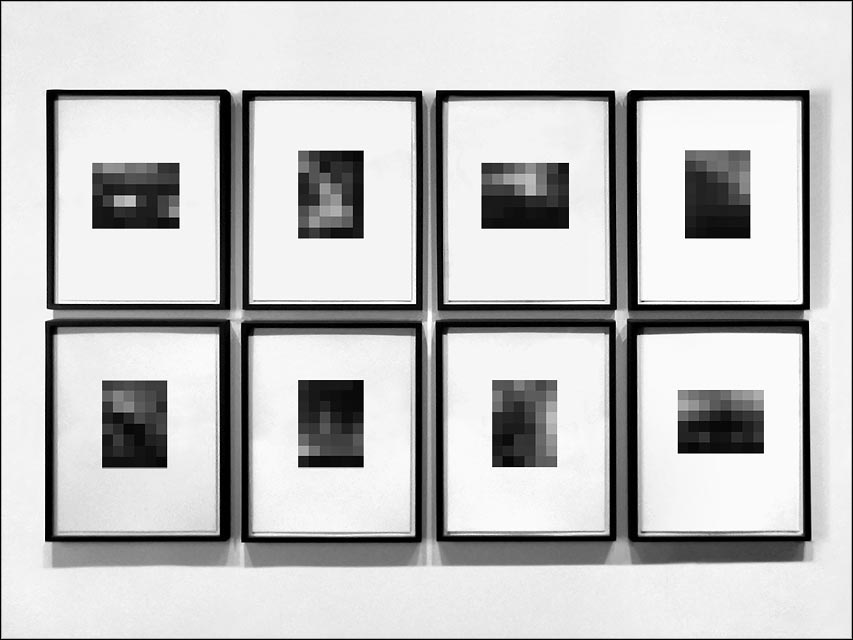 Digital-pigment print, 16"x12" |
Equivalents:
After Stieglitz “Songs of the Sky, 1923,” 8 of 18
photographs, Sherrie Levine, 2006
|
|||||||||
| Elizabeth Peyton—Alfred Stieglitz—Georgia O'Keefe | ||||||||||
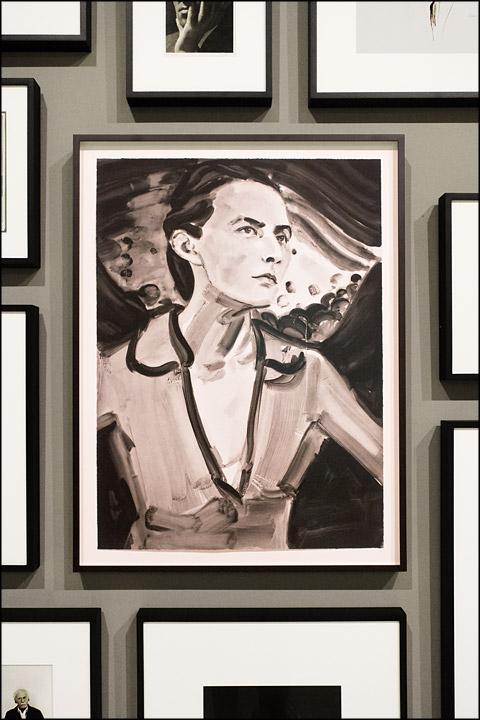 Digital pigment print, 12"×16" Whitney Museum of American Art, New York, 2016 |
Georgia, (After Stieglitz, 1918), Elizabeth Peyton, 2006. The portrait of Alfred Stieglitz in the lower left corner is a detail of a photograph by Arnold Newman, Georgia O'Keefe and Alfred Stieglitz, 1944 |
|||||||||
| Marcel Duchamp—Alfred
Stieglitz |
||||||||||
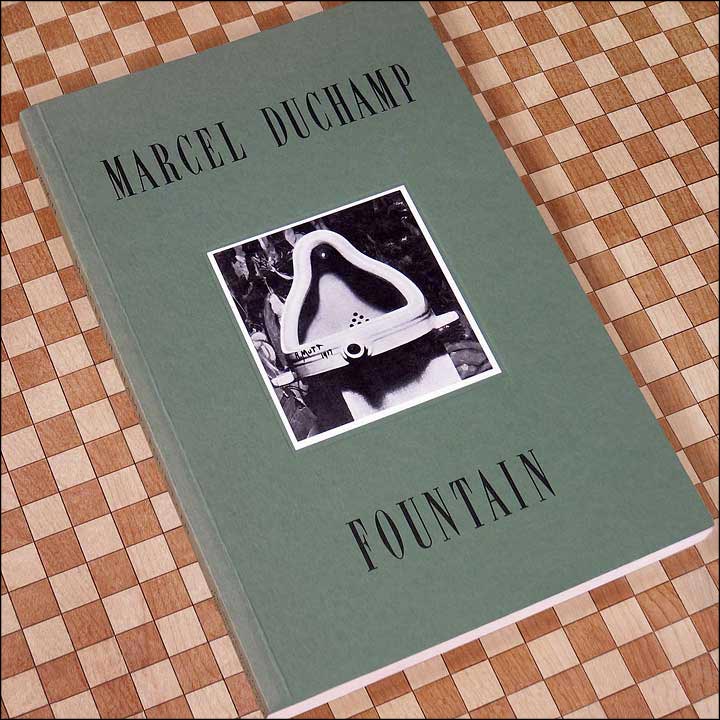 Digital-pigment print, 12"x16" Landweber’s studio, 2006 |
Marcel
Duchamp: Fountain
|
|||||||||
| Man Ray—Marcel Duchamp (David Ireland) | ||||||||||
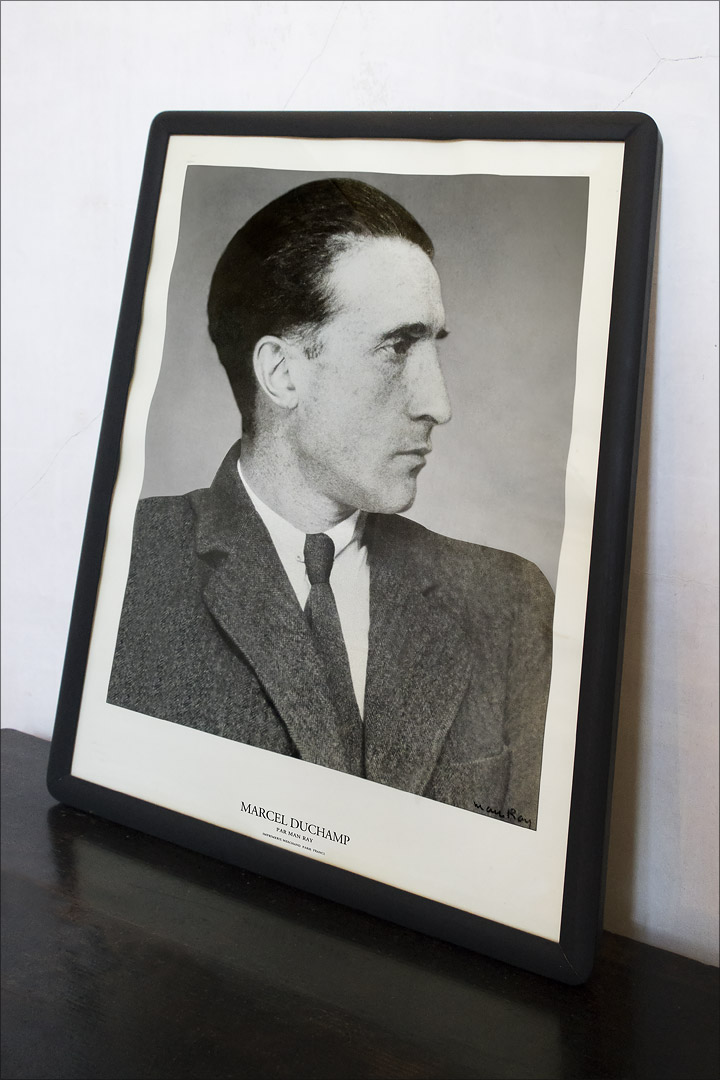 Digital-pigment print, 12" × 16" David Ireland House, 500 Capp Street, San Francisco, 2016 |
Marcel
Duchamp par Man Ray On display at David Ireland House, 500 Capp Street, San Francisco
|
|||||||||
| David Hammons—Marcel Duchamp (Leonardo) | ||||||||||
 Digital-pigment print, 16"x12" Museum of Modern Art, New York, 2008 |
The
Holy Bible: Old Testament |
|||||||||
| Beatrice Wood—Marcel Duchamp + Francis Picabia + Albert Gleizes | ||||||||||
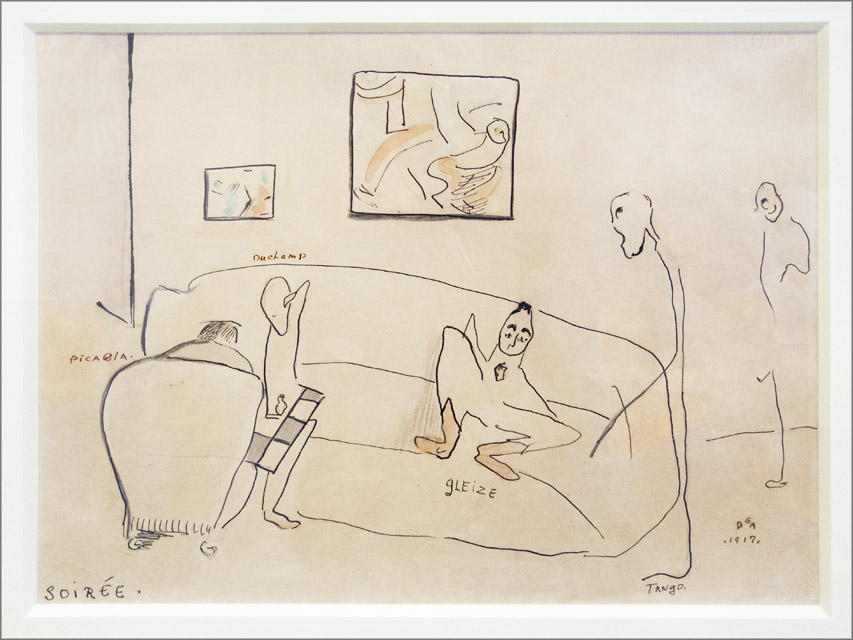 Digital-pigment print, 16"x12" Hammer Museum, Los Angeles, 2011 |
Soirée (Beatrice
Wood, 1917), Apartment of Walter and Louise Arensberg, New York |
|||||||||
| Marcel Duchamp—Mary
Reynolds + Constantin Brancusi |
||||||||||
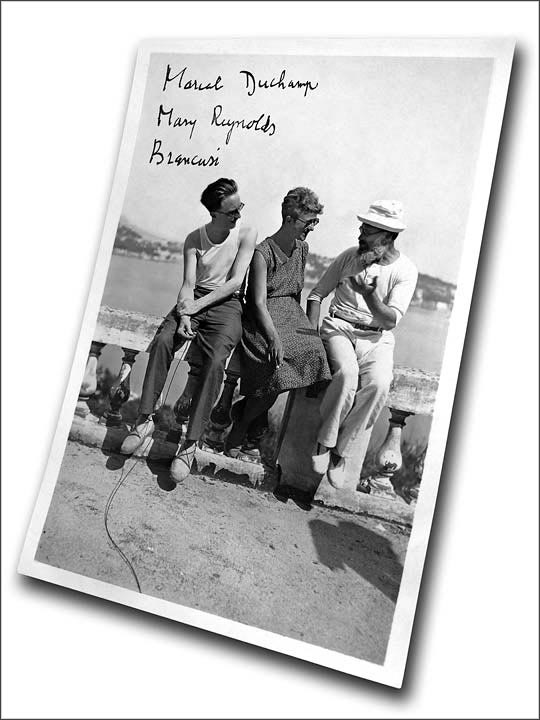 Digital-pigment print, 12"x16" Ryerson Library, Art Institute of Chicago, Mary Reynolds Collection, 2007 |
Duchamp,
Reynolds, Brancusi (Marcel Duchamp, 1929) Villefranche-sur-Mer, France |
|||||||||
| Katherine
Dreier + Joseph Stella + Man Ray + Marcel Duchamp et al. |
||||||||||
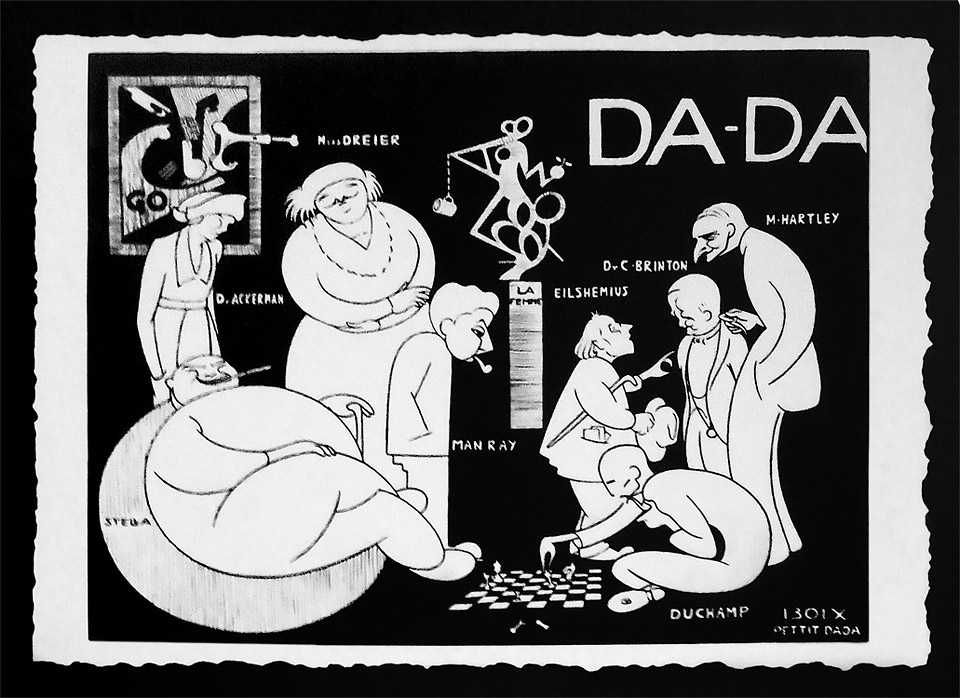 Digital-pigment print, 16"x12" |
Petit
Dada (Richard Boix, 1921)
|
|||||||||
| Marcel Duchamp—Man
Ray |
||||||||||
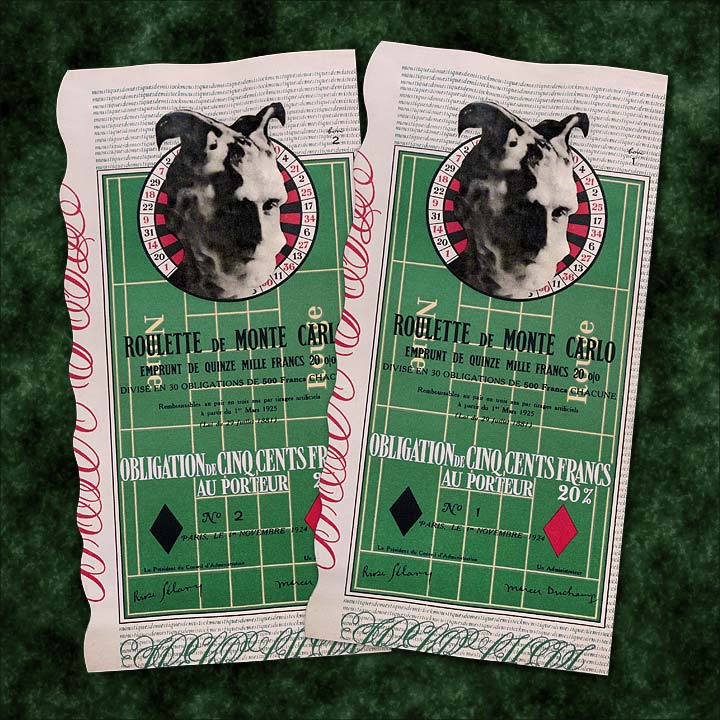 Digital-pigment print, 12"x16" Norton Simon Art Museum, Pasadena, 2008 |
Monte
Carlo Bond (Marcel Duchamp, 1924) Photograph of Duchamp by Man Ray
|
|||||||||
| Marcel
Duchamp—Darryl Curran |
||||||||||
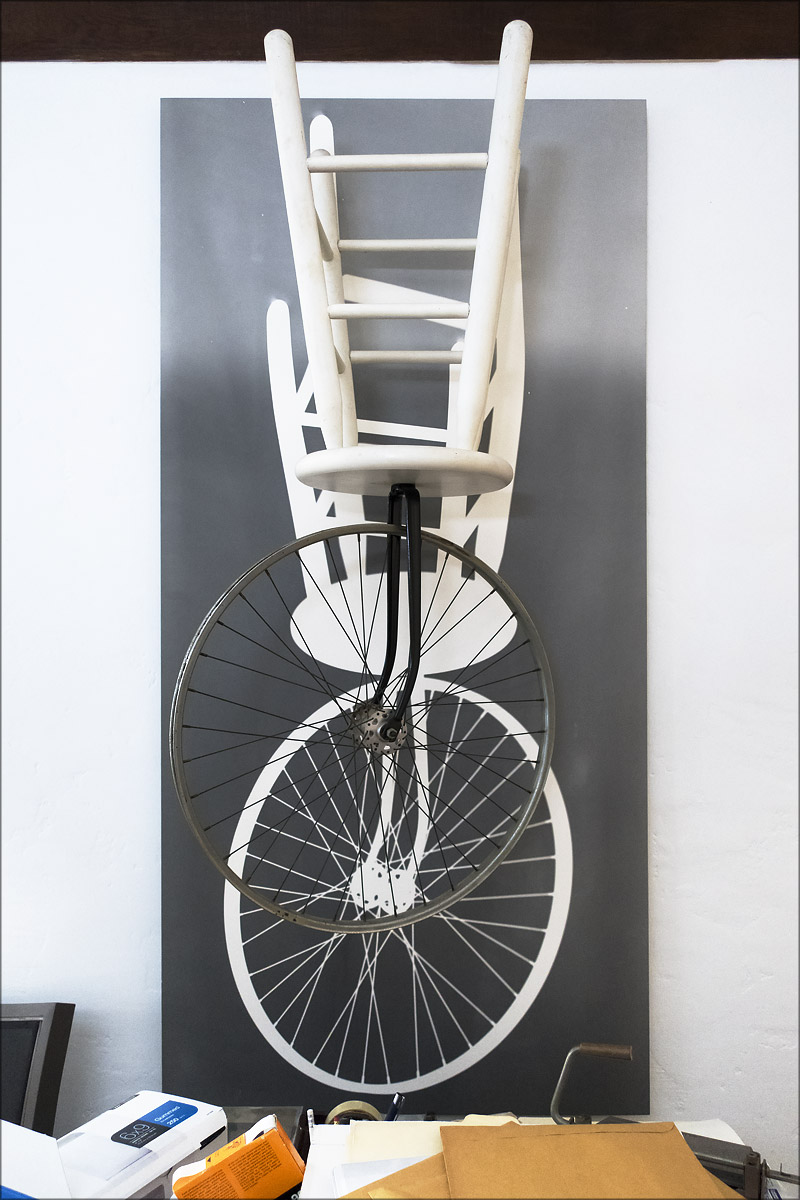 Digital-pigment print, 12"x16" Studio of Darrtyl Curran, 2016 |
Homage to Duchamp, (Darryl Curran, 1989), bicycle wheel and photogram | |||||||||
| Kurt
Schwitters +
Theo van Doesburg + Erik Satie |
||||||||||
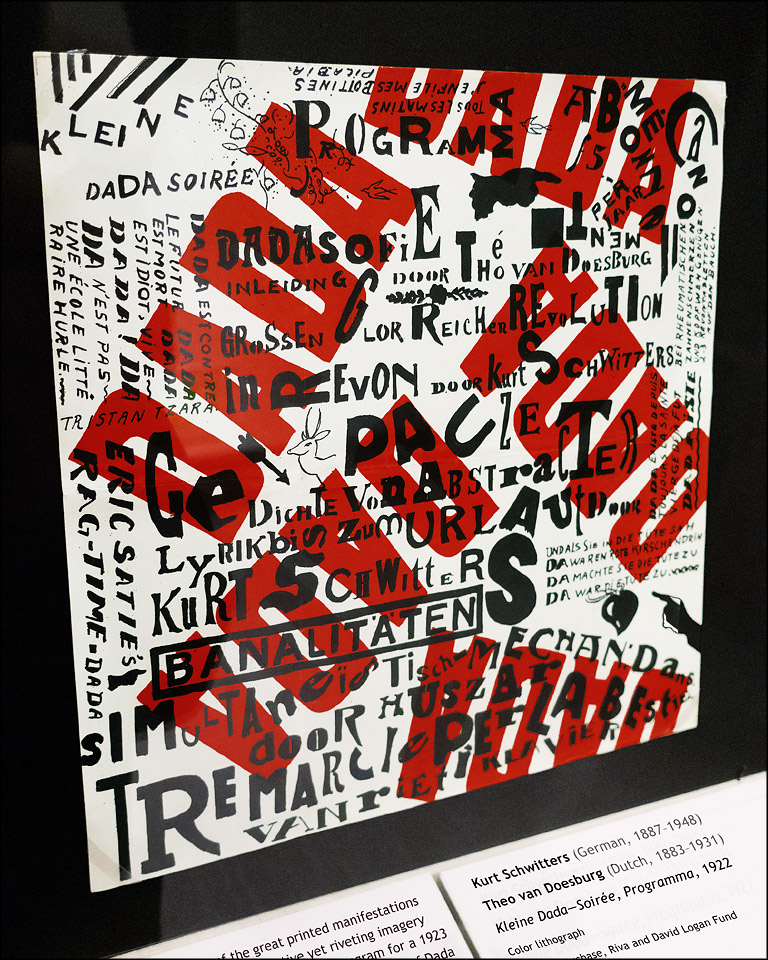 Digital-pigment print, 12" × 18" Palace of the Legion of Honor, San Francisco, 2017 |
Program and poster for Kleine Dada Soirée, Kurt Schwitters and Theo van Doesburg, 1922, with Erik Satie playing rag-time Dada | |||||||||
| Man
Ray + Erik Satie |
||||||||||
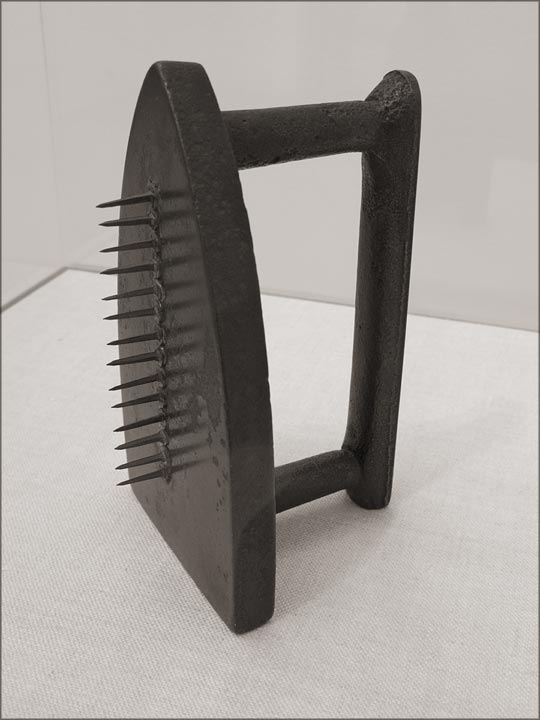 Digital-pigment print, 12"x16" Philadelphia Museum of Art, 2008 |
Cadeau (Man Ray, assisted by Erik Satie, 1921)
|
|||||||||
| Man Ray—Meret
Oppenheim (Stephanie Syjuco) |
||||||||||
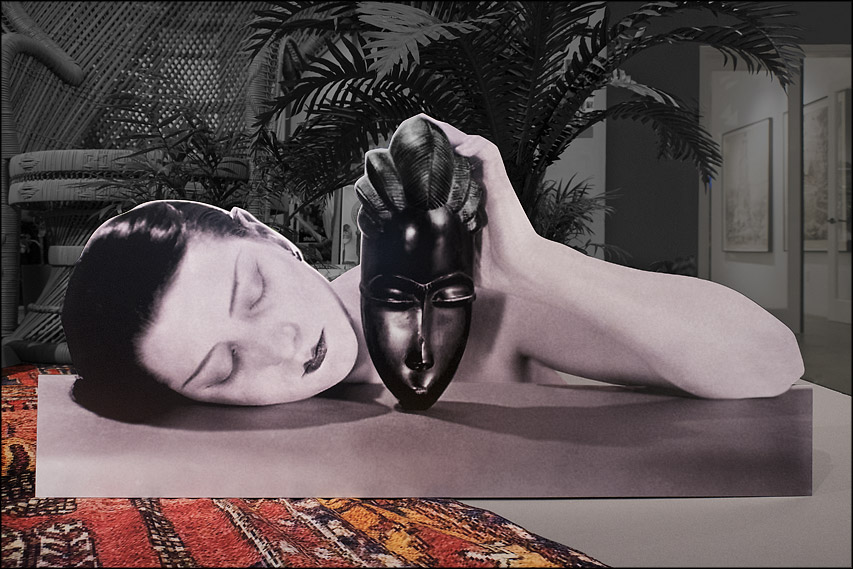 Digital-pigment print, 12"x16" Catherine Clark Gallery, San Francisco, 2016 |
Detail
of Neutral Calibration Studies (Ornament + Crime), Stephanie
Syjuco, 2016, incorporating a cutout portrait of Meret Guggenheim
by Man Ray |
|||||||||
| Man Ray—Lee
Miller |
||||||||||
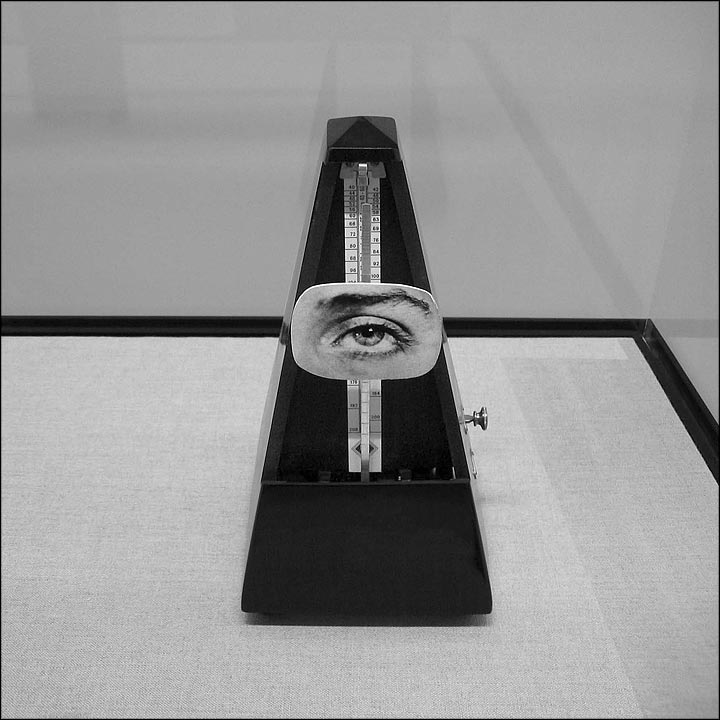 Digital-pigment print, 12"x16" Philadelphia Museum of Art, 2005 |
Indestructible
Object
|
|||||||||
| Lee Miller—Joseph
Cornell |
||||||||||
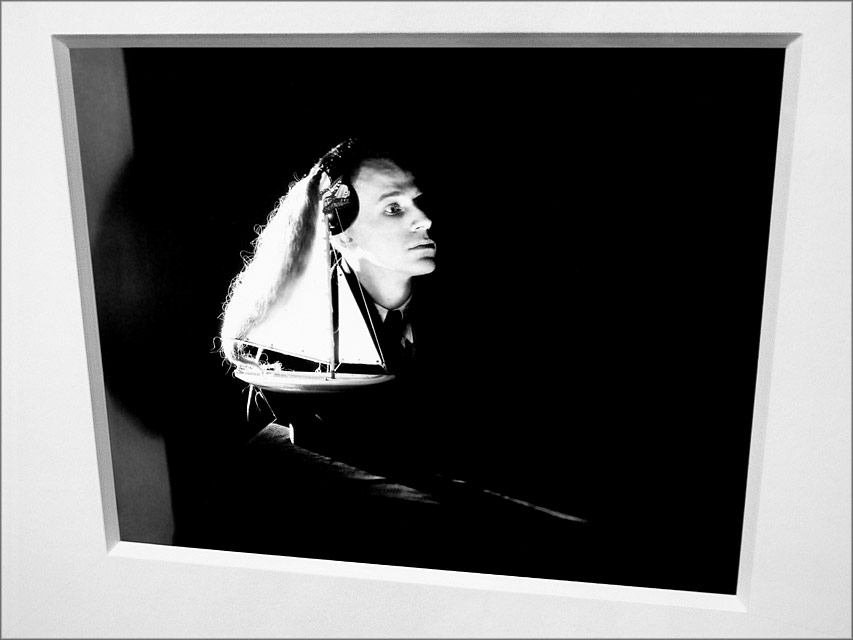 Digital-pigment print, 16"x12" Norton Simon Museum, Pasadena, 2007 |
Joseph
Cornell with One of His Objects
|
|||||||||
| Joseph Cornell—Hedy
Lamarr |
||||||||||
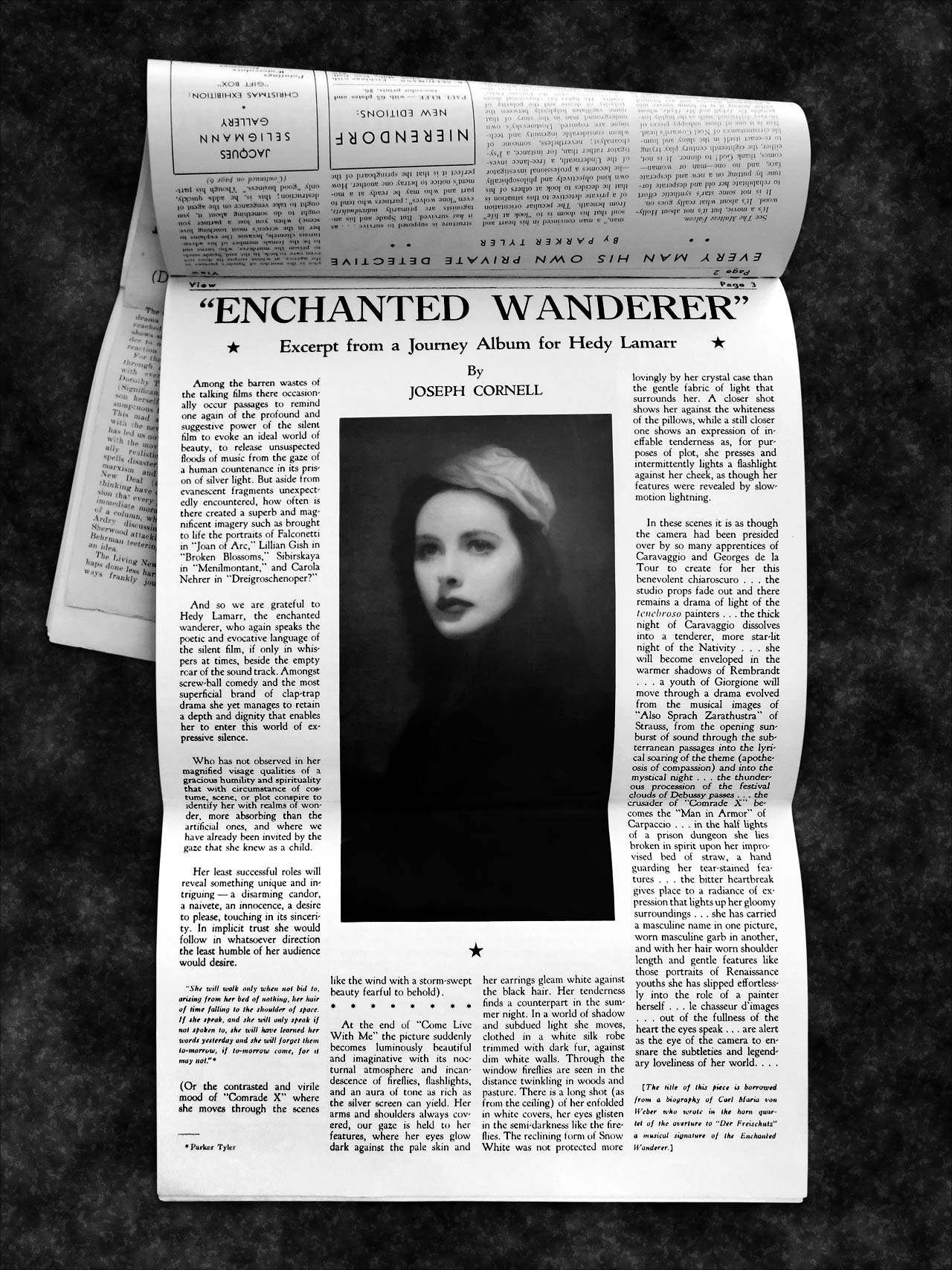 Digital-pigment print, 12"x16" Studio of Dickran Tasjian, 2008 |
Enchanted
Wanderer (Joseph Cornell)
|
|||||||||
| Hedy Lamarr—Franz Klein | ||||||||||
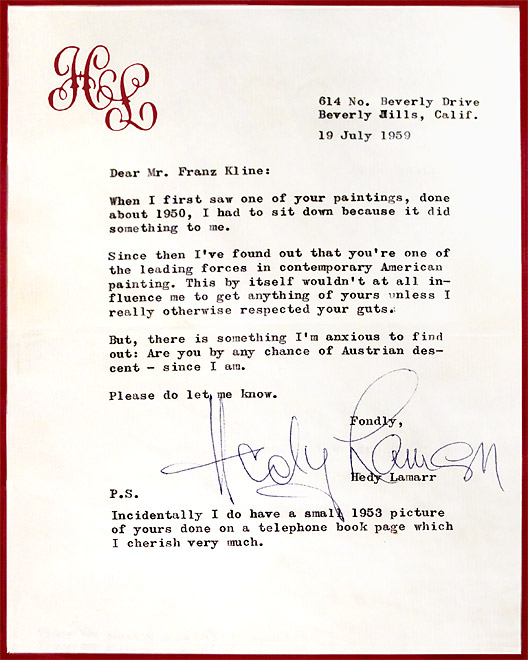 Digital-pigment print, 12"x16" Smithsonian Museum of American Art, 2008 |
Letter
from Hedy Lamarr to Franz Kline, 1959 |
|||||||||
| Franz Klein —Merce Cunningham | ||||||||||
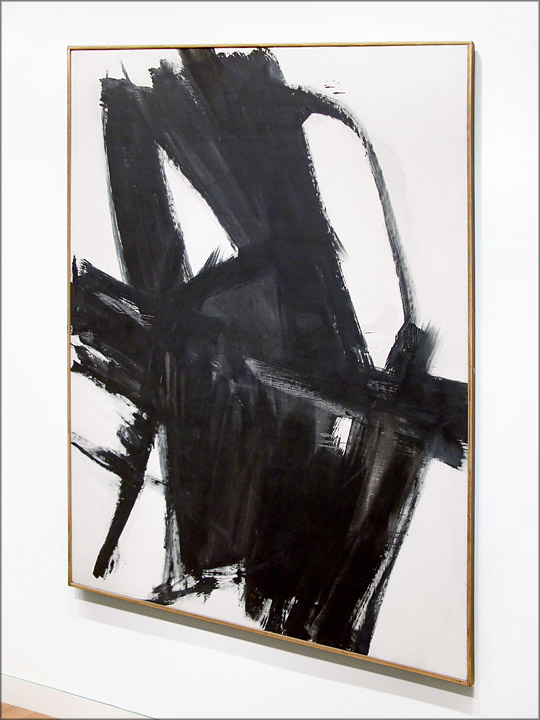 Digital-pigment print, 12"x16" Smithsonian Museum of American Art, 2008 |
Merce C. (Franz Kline, 1961) | |||||||||
| Barbara Morgan—Merce Cunningham | ||||||||||
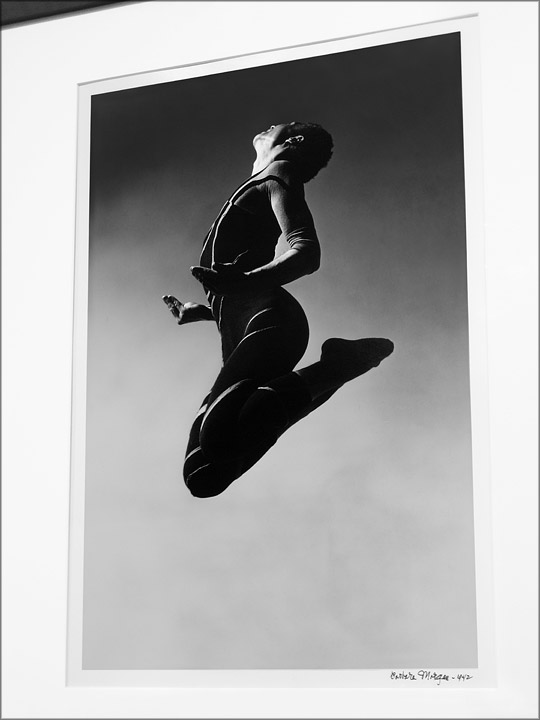 Digital-pigment print, 12"x16" Scott Nichols Gallery, San Francisco, 2008 |
Merce
Cunningham: Totem Ancestor (Barbara Morgan, 1942) |
|||||||||
| Man Ray— |
||||||||||
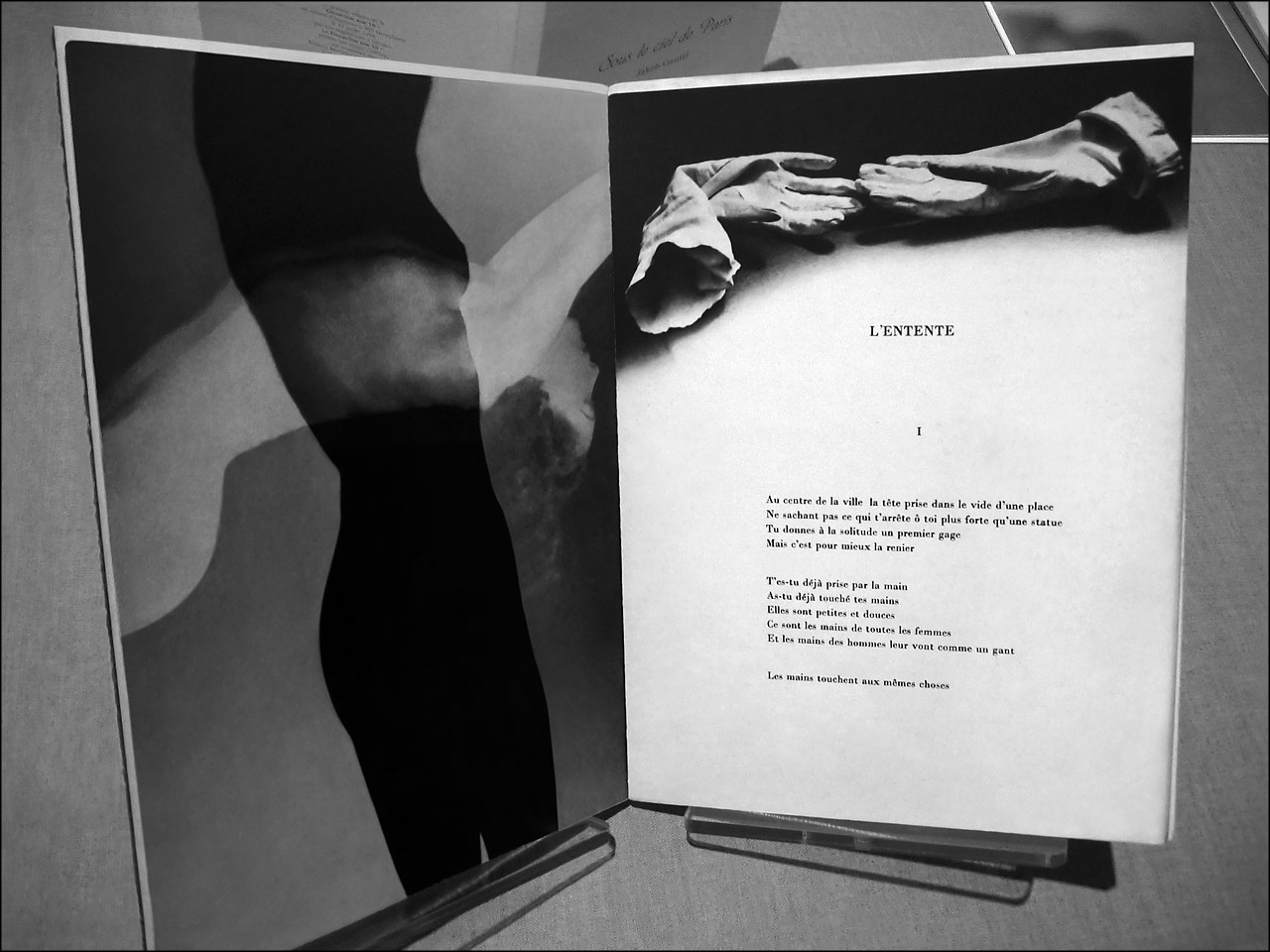 Digital-pigment print, 16"x12" DeYoung Museum, San Francisco, 2006 |
Façile (Paul Éluard,
Man Ray, 1935) Body of Nusch Éluard
|
|||||||||
| Yves Tanguy—Paul Éluard |
||||||||||
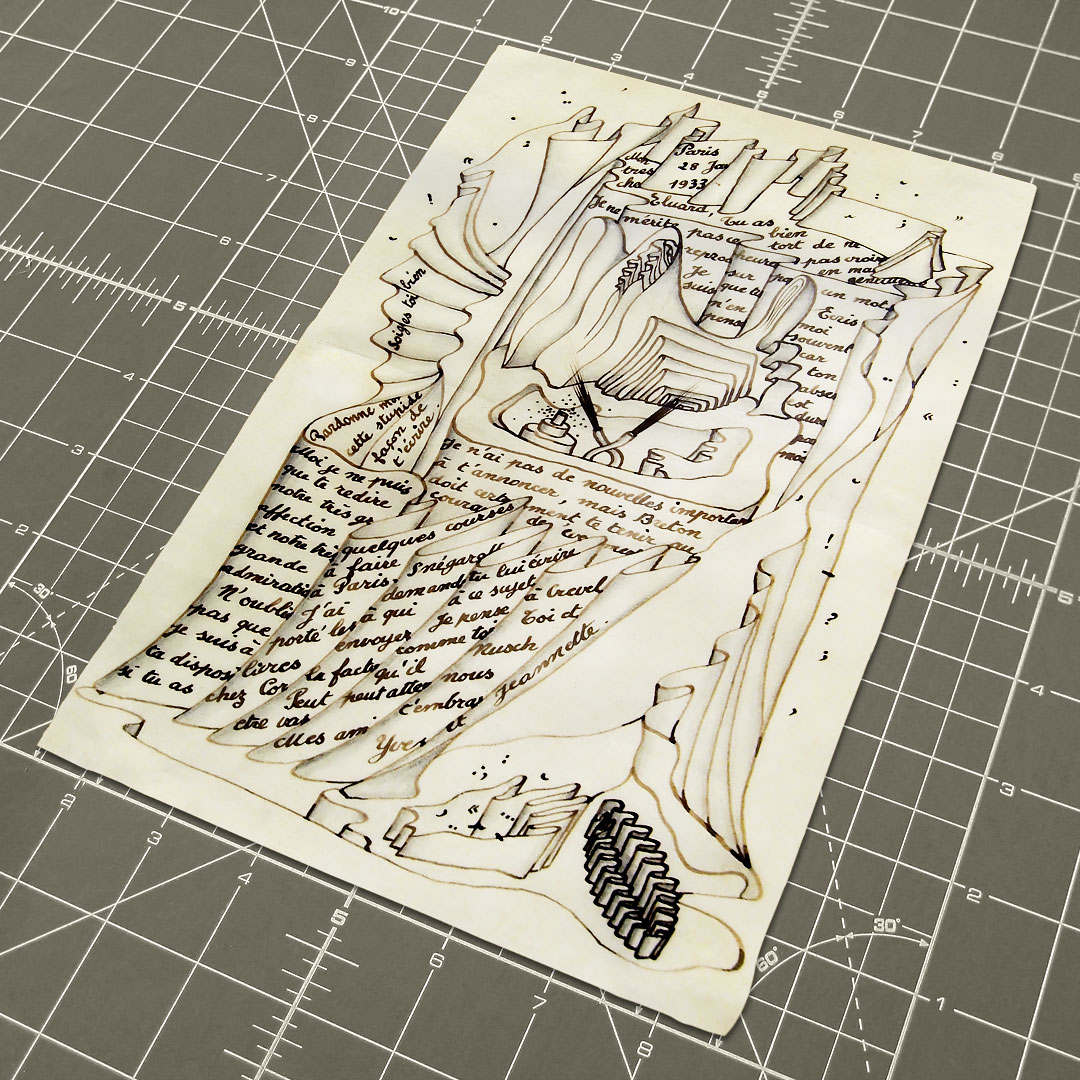 Digital-pigment print, 16"x12" Museum of Modern Art, New York, 2008 |
Letter
from Yves Tanguy to Paul Éluard, 1933
|
|||||||||
| Man Ray—Paris
Surrealists, 1934 |
||||||||||
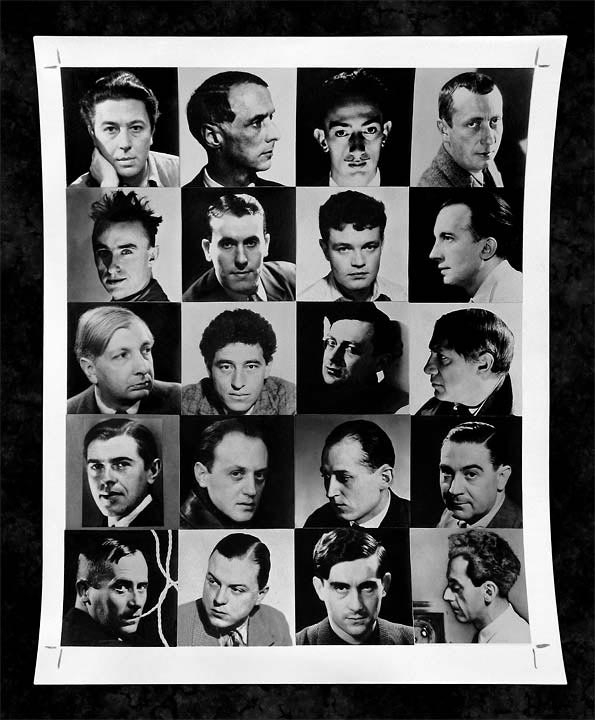 Digital-pigment print, 12"x16" Library of the Los Angeles County Museum of Art, Bernard Karpel Collection, 2007 |
Échiquier
Surréaliste André Breton, Max Ernst, Salvador Dali, Hans Arp, Yves Tanguy, René Char, René Crevel, Paul Éluard, Giorgio De Chirico, Alberto Giacometti, Tristan Tzara, Pablo Picasso, René Magritte, Victor Brauner, Benjamin Péret, Gui Rosey, Joan Miró, E.L.T. Mesens, Georges Hugnet, Man Ray
|
|||||||||
| Sherrie Levine—Man
Ray |
||||||||||
 Digital-pigment print, 12"x16" San Francisco Museum of Modern Art, 2006 |
La
Fortune (After Man Ray)
|
|||||||||
| Sherrie Levine—René Magritte |
||||||||||
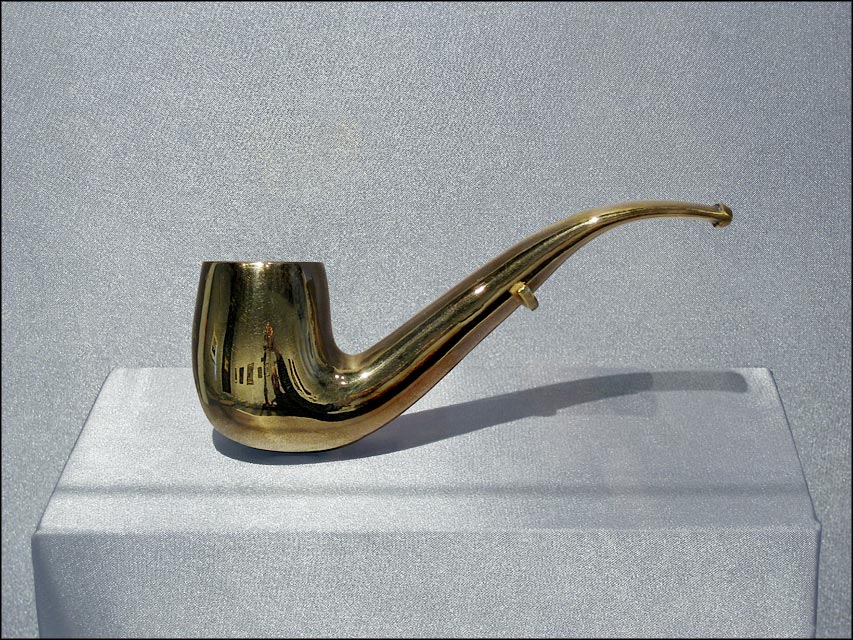 Digital-pigment print, 16"x12" Los Angeles County Museum of Art, 2007 |
A
Pipe (Sherrie Levine, 2001)
|
|||||||||
| André Breton + René Magritte | ||||||||||
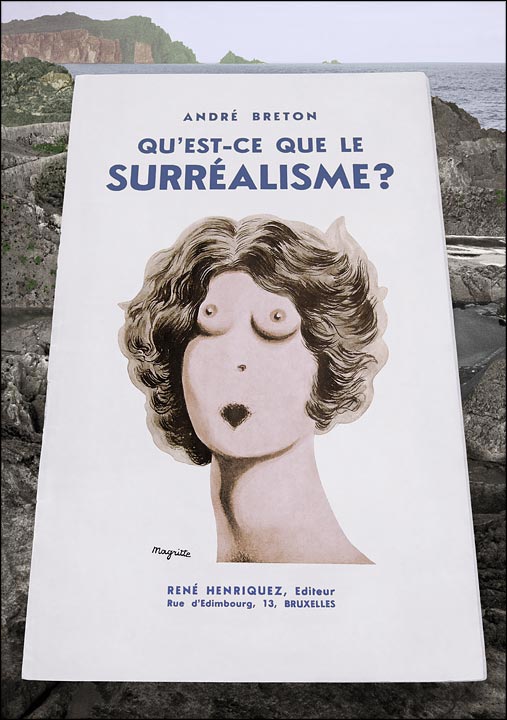 Digital-pigment print, 16"x12" Ryerson Library, Art Institute of Chicago, Mary Reynolds Collection, 2007 |
|
|||||||||
| André Breton + Alberto Giacometti | ||||||||||
|
Le
Surréalisme au service de la révolution (André Breton)
/ “Objets mobiles et muets,” including Disagreeable
Object to be Thrown Away (Alberto Giacometti), 1931
|
|||||||||
| Steve Wolfe—Alfred
Barr (modern art movements) |
||||||||||
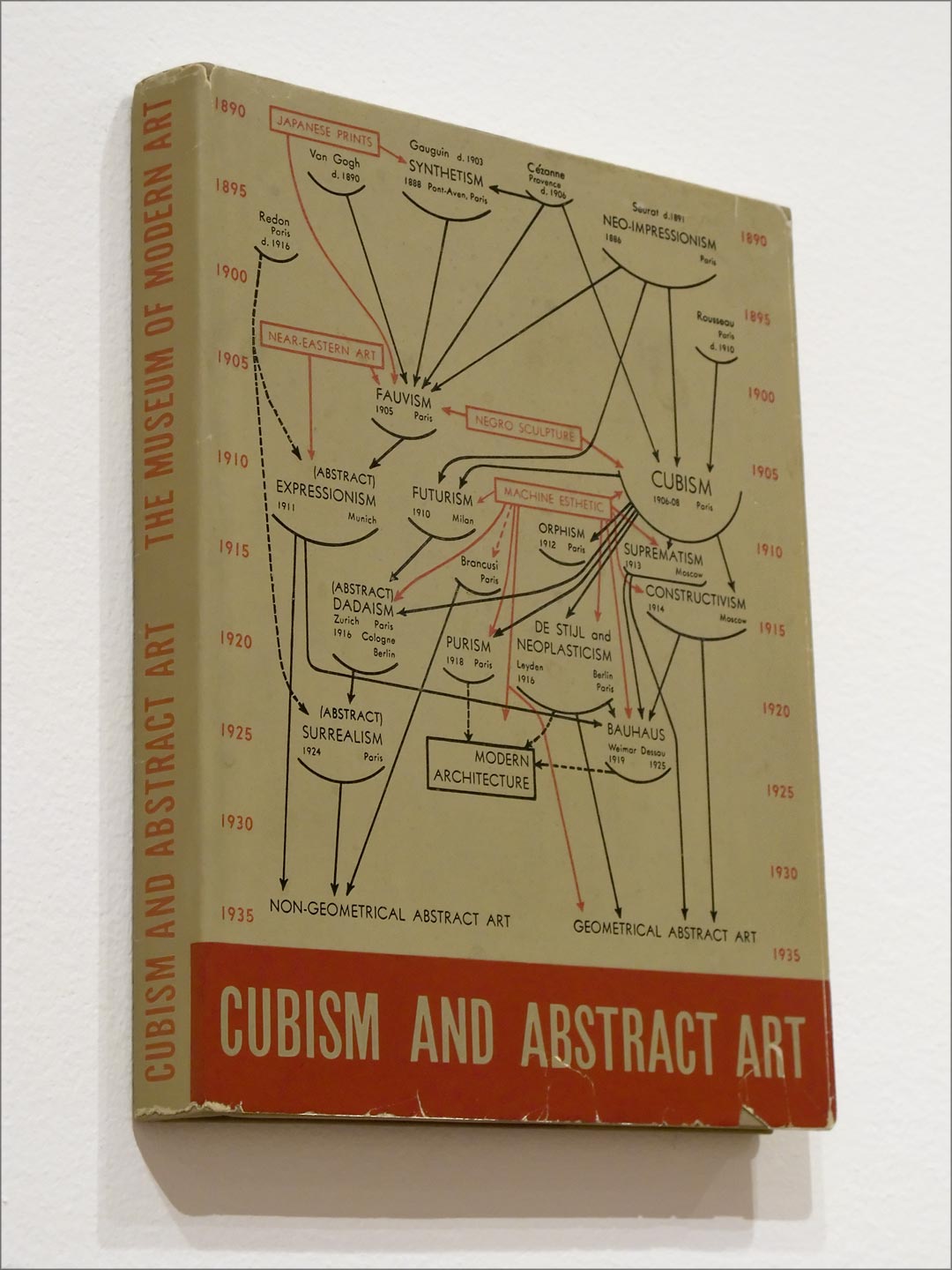 Digital-pigment print, 12"x16" Museum of Modern Art, New York, 2008 |
Untitled (Cubism and Abstract Art by Alfred Barr) (Steve Wolfe, 1997) — oil, lithography ink and modeling paste on paper, mounted on wood and canvasboard. Barr's book was published in 1936.
|
|||||||||
| Roger Kizik—Alfred Barr (Henri Matisse) | ||||||||||
|
Matisse (by Alfred Barr) (Roger Kizik, 2011) — acrylic, cut paper on panel, 4×6½ feet.. Barr's book was published in 1951. | |||||||||
| Alfred Barr—Lee Miller | ||||||||||
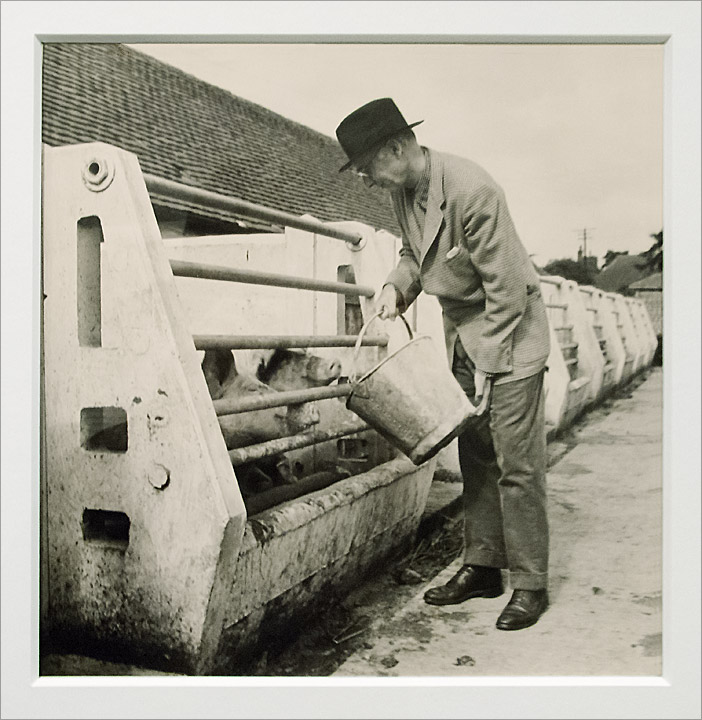 Digital-pigment print, 12"x16" Phladelphia Museum of Art, 2008 |
Alfred Barr feeding the pigs at Farley Farm, “The Home of the Surrealists.” Photograph by Lee Miller, 1952 |
|||||||||
| Ad Reinhardt—Modernists. |
||||||||||
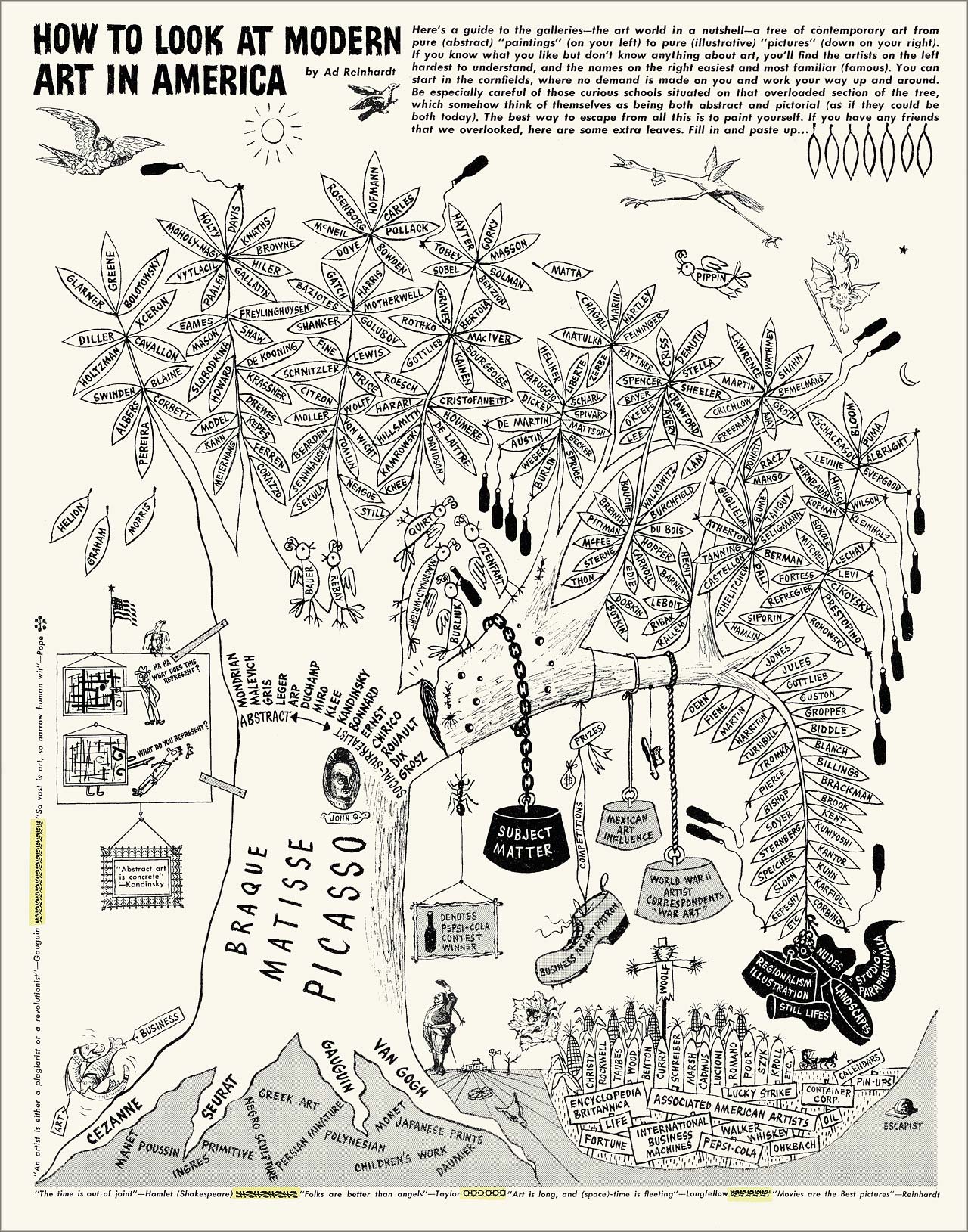 Digital-pigment print, 12"x16" Landweber’s studio, 2007 |
How
to Look at Modern Art in America,
|
|||||||||
| Nicholas
Knight—Pablo Picasso |
||||||||||
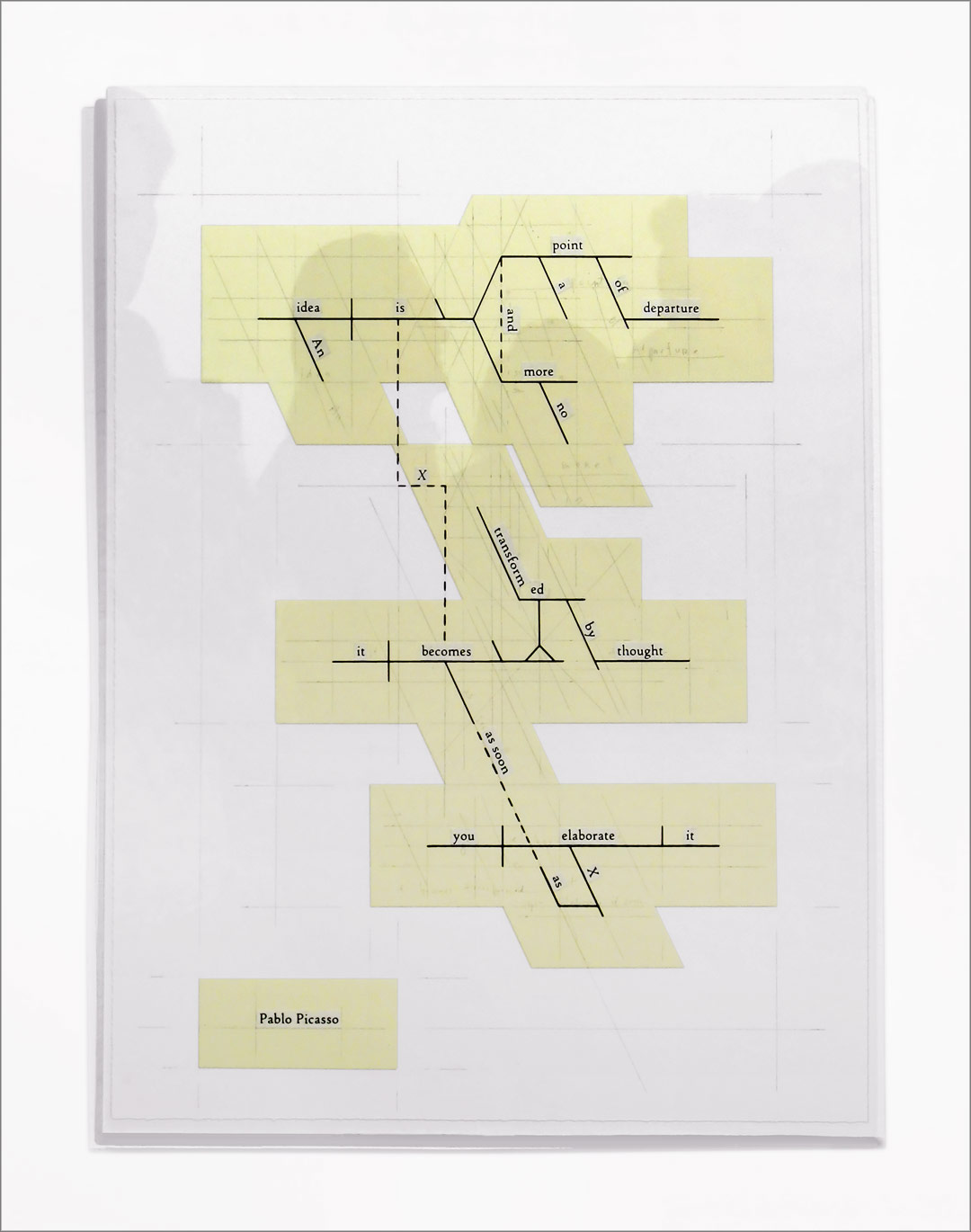 Digital-pigment print, 12"x16" Binder Gallery, Marfa, Texas, 2007 |
Transformed
(Picasso),
|
|||||||||
| Pablo Picasso |
||||||||||
|
Head:
Study for a Monument for Apollinaire's Tomb, Pablo Picasso,
1929,
|
|||||||||
| Jasper Johns—Pablo
Picasso |
||||||||||
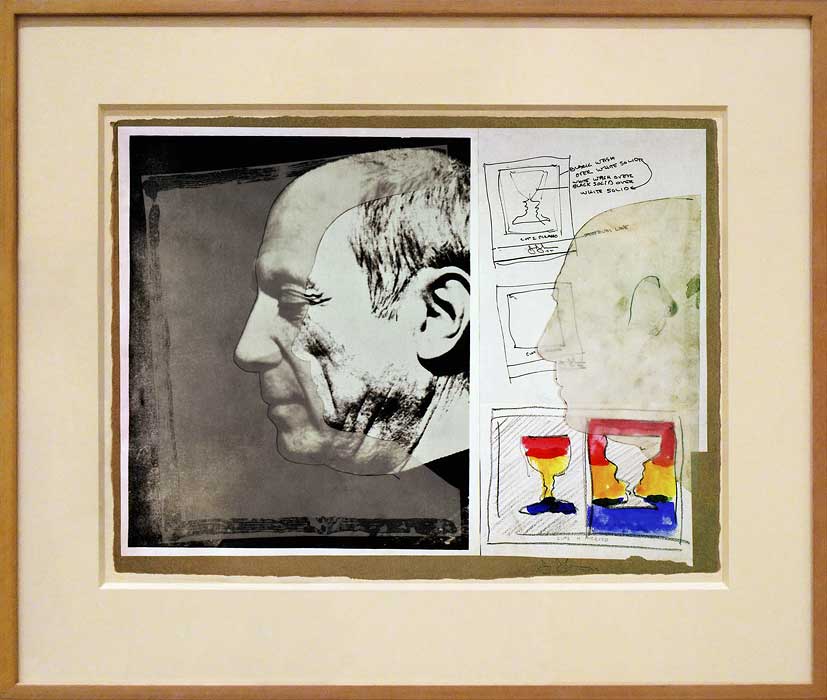 Digital-pigment print, 12"x16" |
Sketch for Cups 2 Picasso/Cups 4 Picasso, Jasper Johns, 1971-1972
|
|||||||||
| David Hocknery—Pablo Picasso | ||||||||||
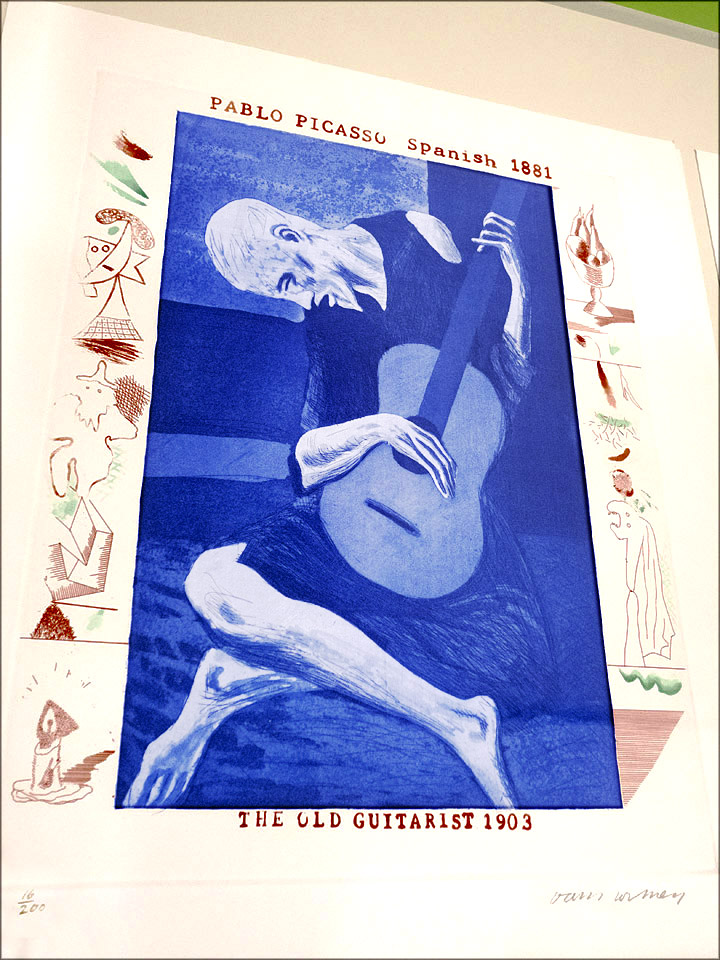 Digital-pigment print, 16"x12", 2017 Photographed at the Palace of the Legion of Honor, San Francisco |
|
|||||||||
| Pablo Picasso—Lee Miller | ||||||||||
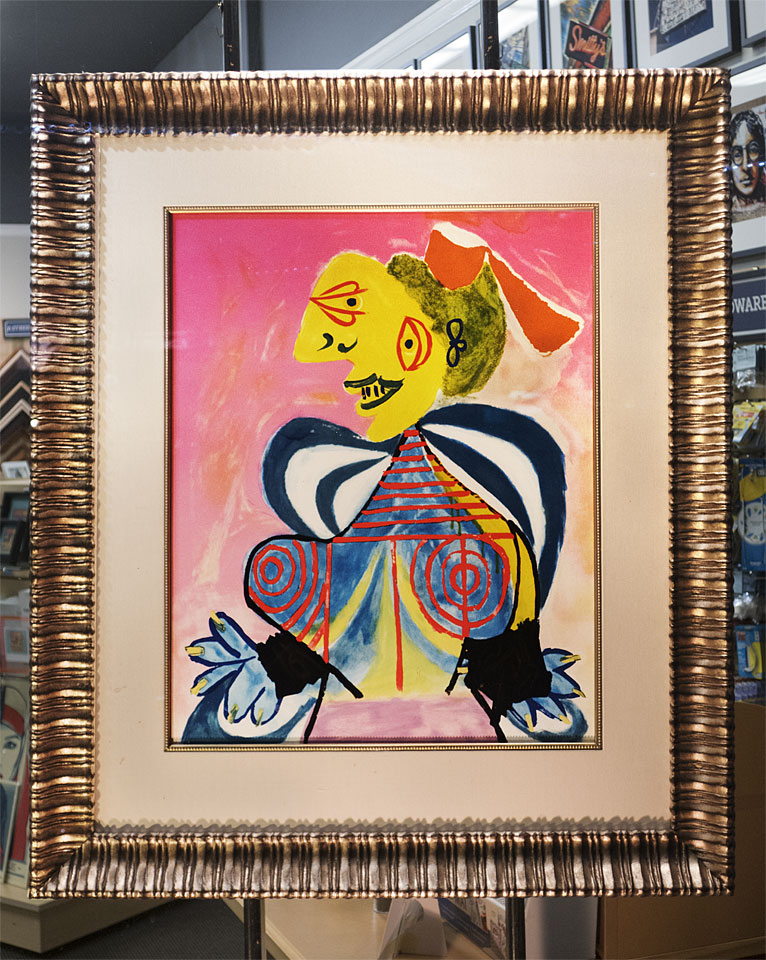 Digital-pigment print, 12"x16" Photographed at Cheap Pete's Frame Factory, Oakland CA, 2018 |
Portrait of Lee Miller L’Arlésienne (The Girl from Arles), Pablo Picasso, 1937
|
|||||||||
| Richard Pettibone—Roy
Lichtenstein—Picasso + Matisse |
||||||||||
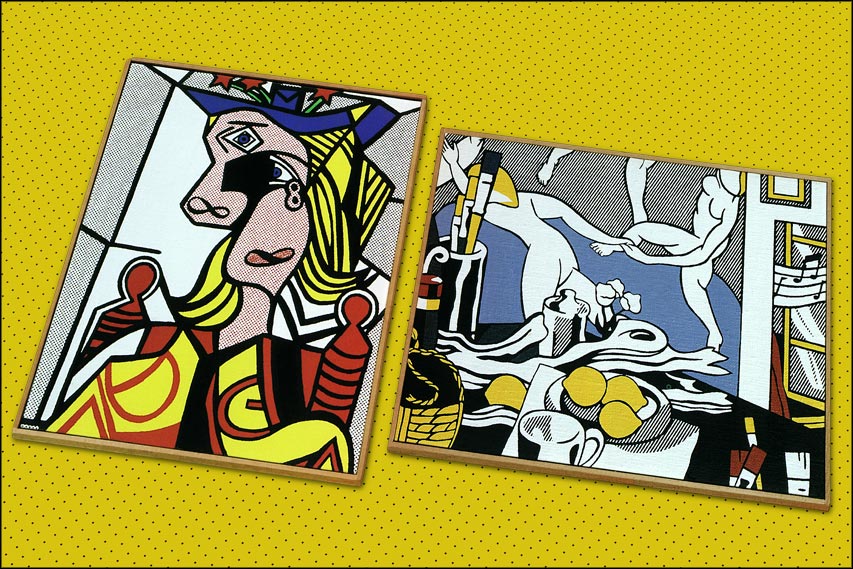 Digital-pigment print, 16"x12" Photographed at Landweber’s studio, 2008 |
Picasso/Woman
with Flowered Hat
|
|||||||||
| Roy
Lichtenstein + Philip Glass |
||||||||||
|
|
|||||||||
| Chuck
Close—Roy Lichtenstein |
||||||||||
|
|
|||||||||
| Chuck Close—Philip
Glass (Nam June Paik) |
||||||||||
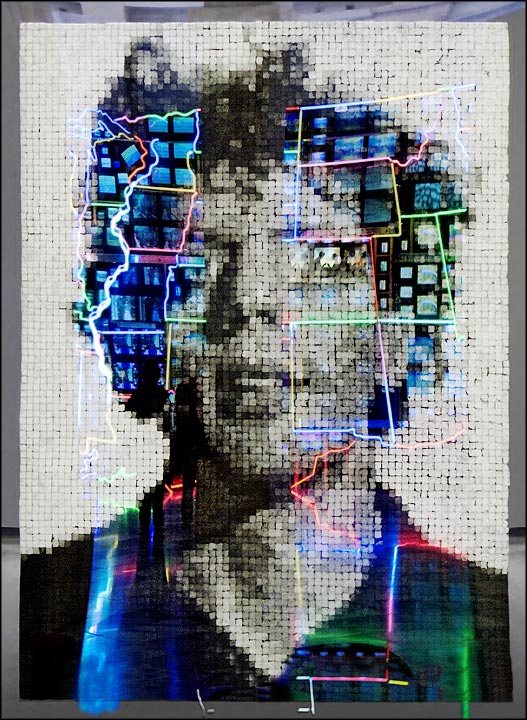 Digital-pigment print, 12"x16" Photographed at the Smithsonian American Art Museum, Washington, DC, 2008 |
Phil III, portrait of Philip Glass, Chuck Close, 1982, cast paper pulp, with reflection of Electronic Superhighway: Continental U.S., Alaska, Hawaii, Nam June Paik, 1995. | |||||||||
| Nam June Paik—Charlotte Moorman | ||||||||||
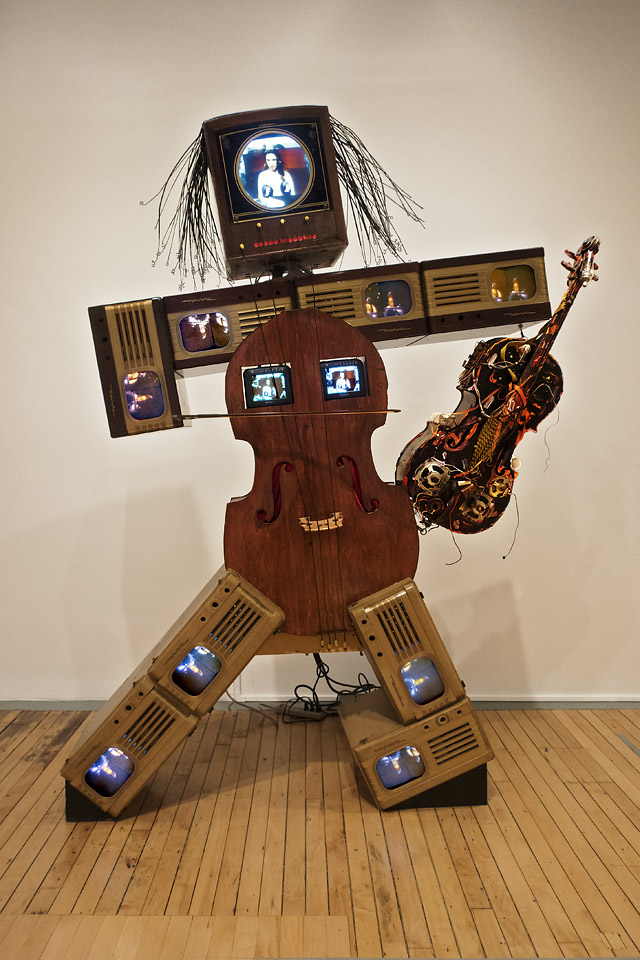 Digital-pigment print, 12"x16" Photographed at the Grey Art Gallery, NYU, 2016 |
|
|||||||||
| Nam June Paik—Charlotte Moorman | ||||||||||
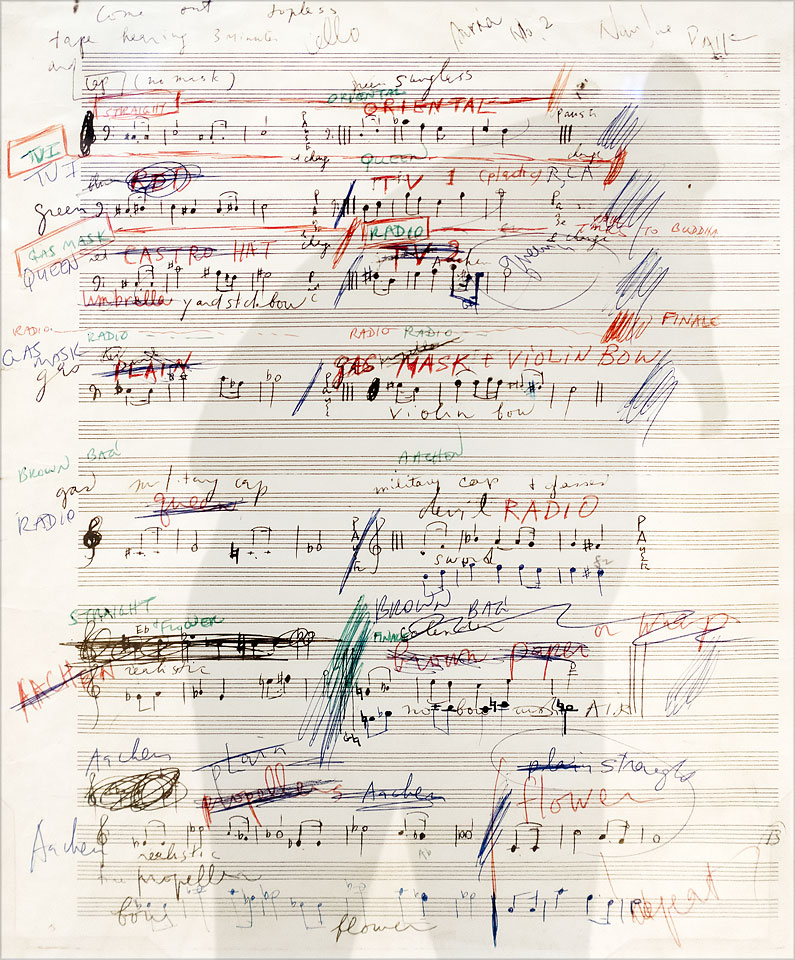 Digital-pigment print, 12"x16" Photographed at Grey Art Gallery, NYU, 2016 |
Score
for Aria 2 of Opera Sextronique, with annotations and additions by Charlotte Moorman, Nam June Paik, 1967 Braham's Lullaby, rearranged for cello and piano for a topless performance by Ms. Moorman using props, masks, hats and propellers |
|||||||||
| Robert Longo—Cindy Sherman | ||||||||||
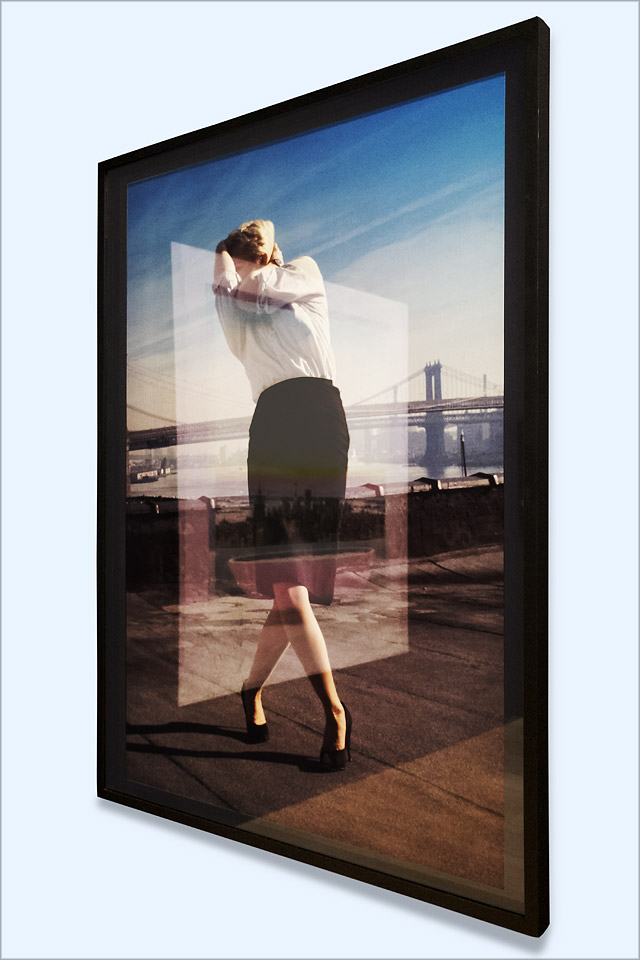 Digital-pigment print, 16"x12" Photographed at the Whitney Museum of American Art, 1916 |
||||||||||
| Cindy Sherman—Victor Landweber | ||||||||||
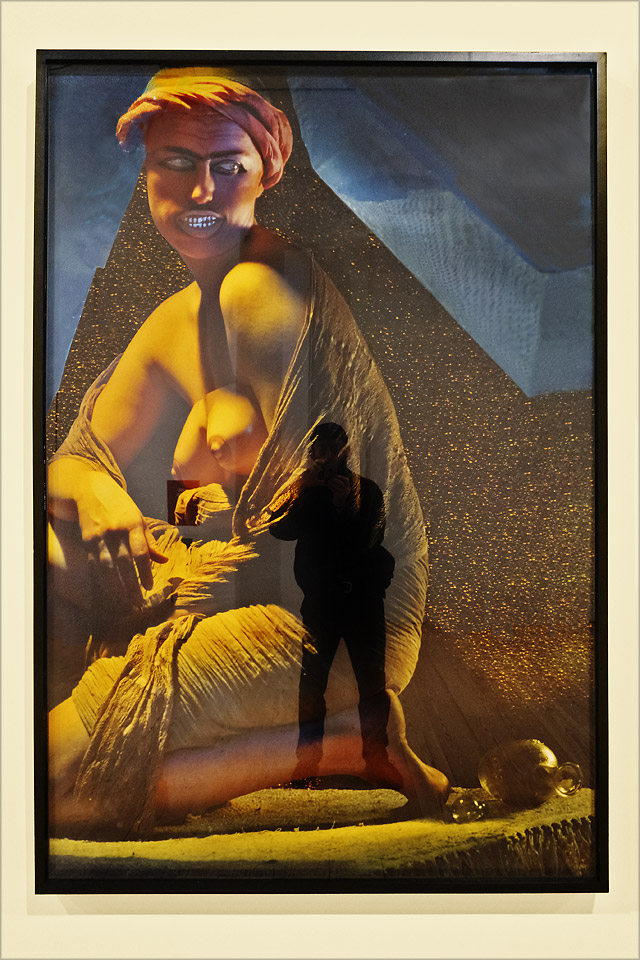 Digital-pigment print, 16"x12" Photographed at the Whitney Museum of American Art, 1916 |
||||||||||
| Robert Arneson—Jackson
Pollock |
||||||||||
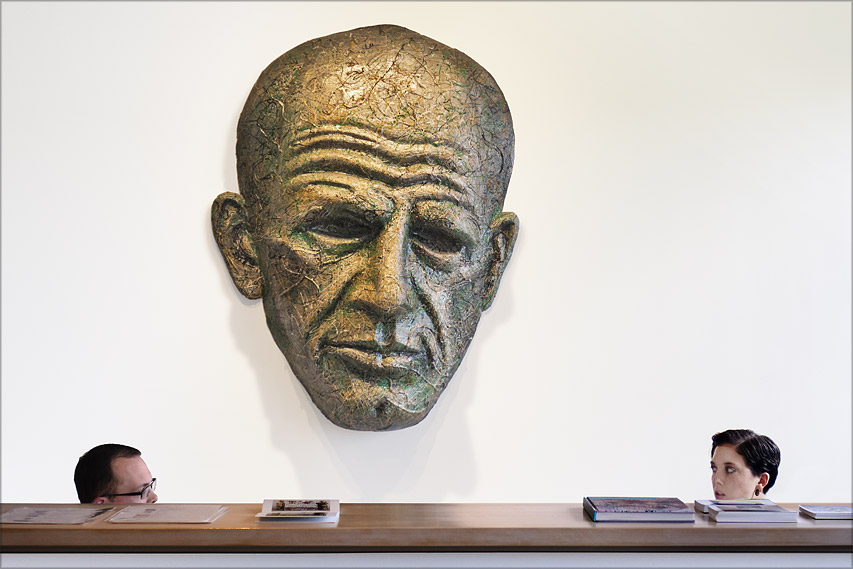 Digital-pigment print, 16"x12" Photographed at Brian Gross Fine Art, San Francisco, 2016 |
Stringhalt
J, Robert Arneson, 1987, portrait of Jackson Pollock, cast paper with paint. |
|||||||||
| Robert Arneson—Jackson
Pollock |
||||||||||
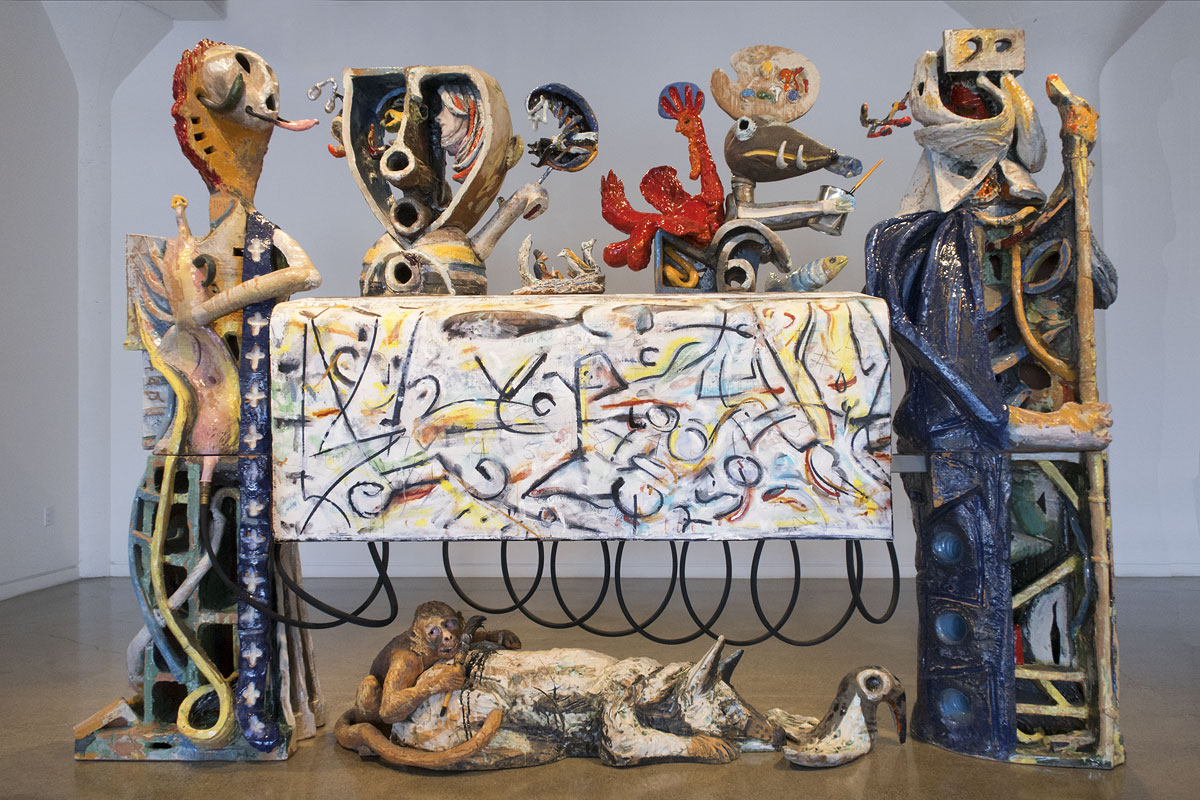 Digital-pigment print, 16"x12" Photographed at Brian Gross Fine Art, San Francisco, 2016 |
Guardians of the Secret II, Robert Arneson, 1989–90, (after Jackson Pollock's Guardians of the Secret, 1943), glazed stoneware, plexiglass, steel, canvas, wood, and mixed media | |||||||||
| Red Grooms—Cedar
Bar artists et. al. |
||||||||||
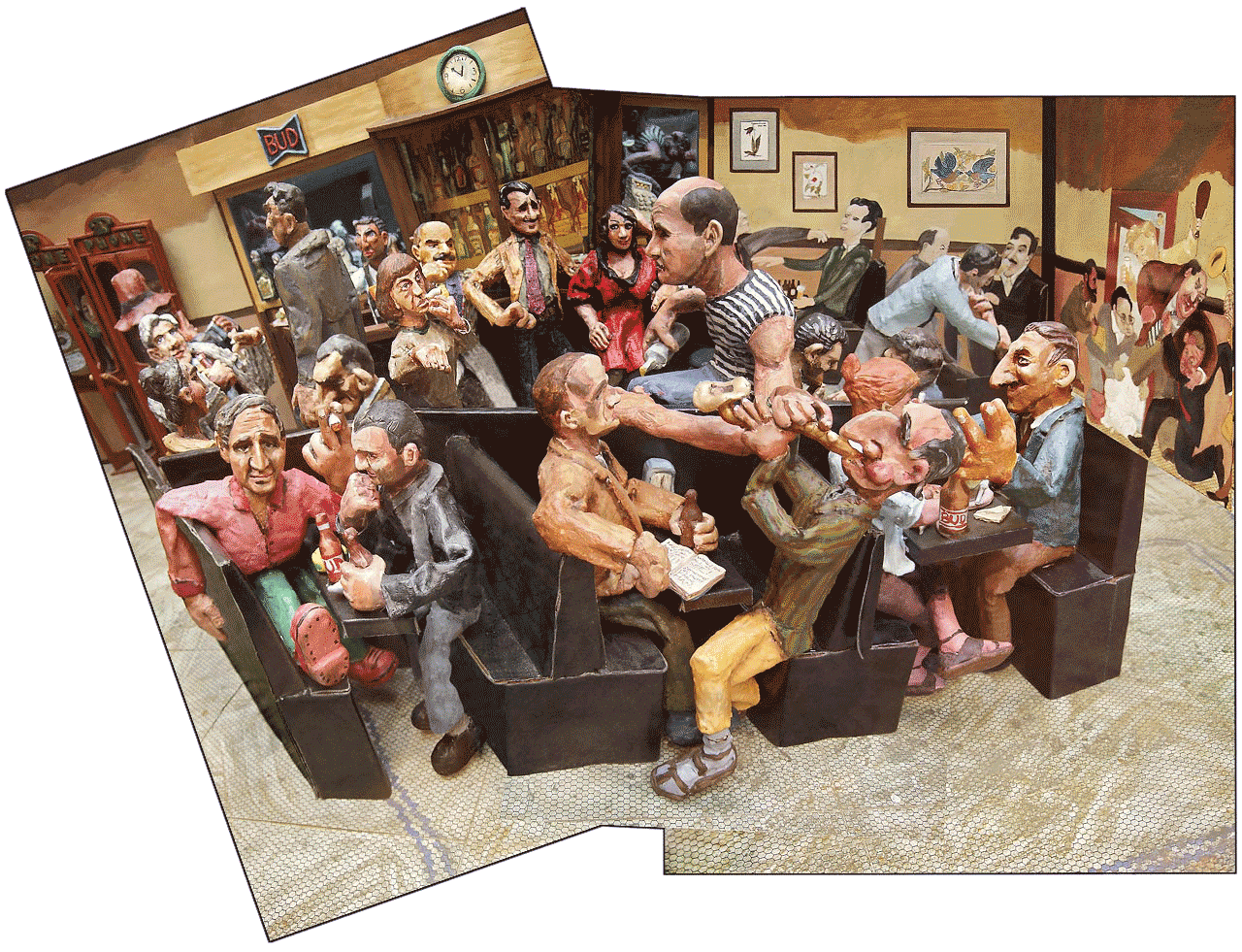 Digital-pigment print, 16"x12" Photographed at The Princeton University Art Museum, 2007 |
Cedar
Bar,
|
|||||||||
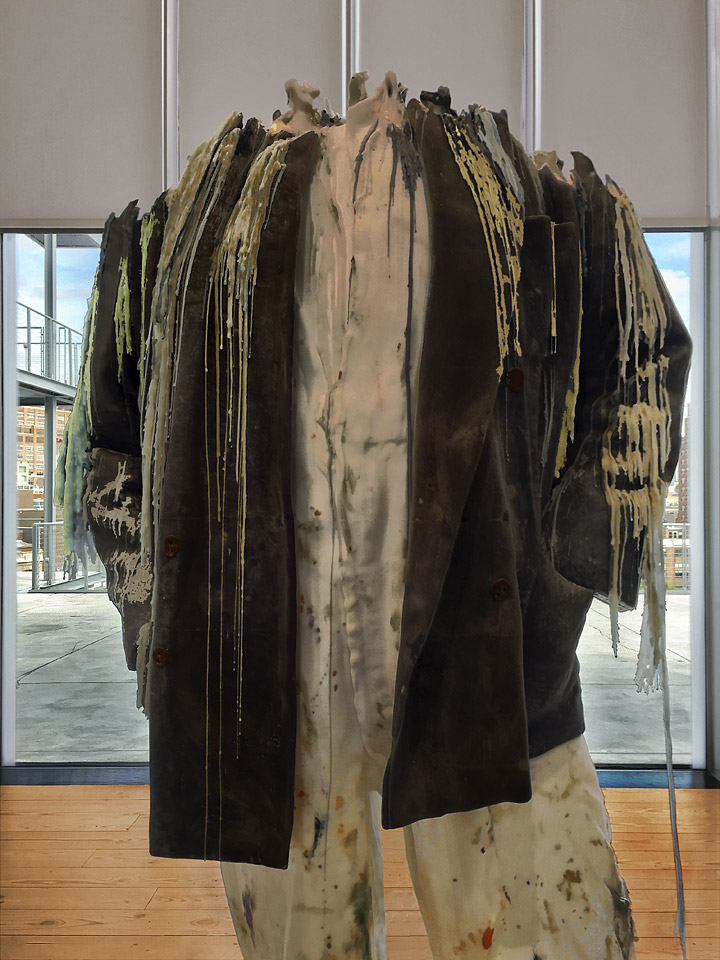 Digital-pigment print, 16"x12" Photographed at the Whitney Museum of American Art, 1916 |
||||||||||
| Don Celender—Artists |
||||||||||
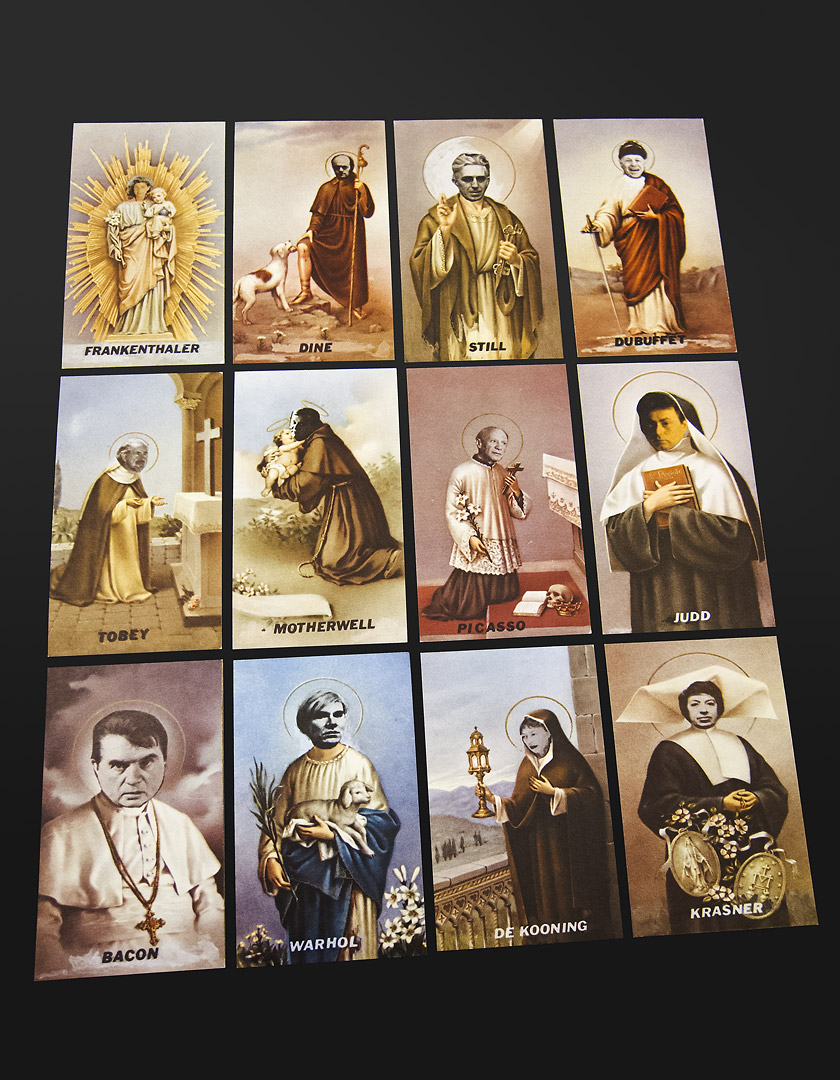 Digital-pigment print, 12"x16" Photographed at the Getty Research Institute, Jean Brown papers, 2014 |
Holy,
Holy Art Cards, Fancy Assorted Christmas Selection, Don Celender,
1972,
|
|||||||||
| Byron
Kim—Artists |
||||||||||
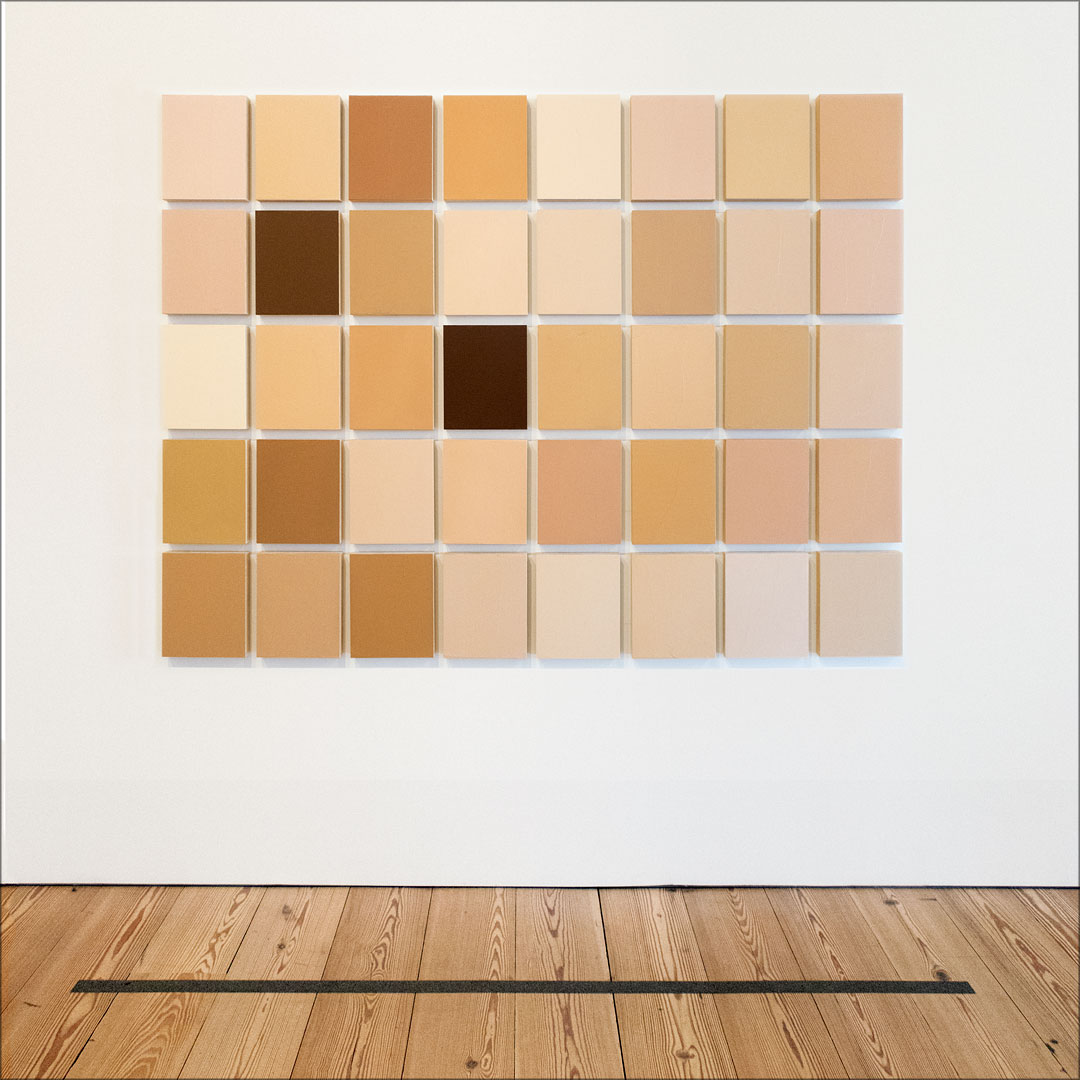 Digital-pigment print, 12"x16" Photographed at the Whitney Museum of American Art, 2016 |
Synecdoche, Byron
Kim, skin color of artists
and friends, 1991–ongoing
|
|||||||||
| Wayne Thiebaud—Artists |
||||||||||
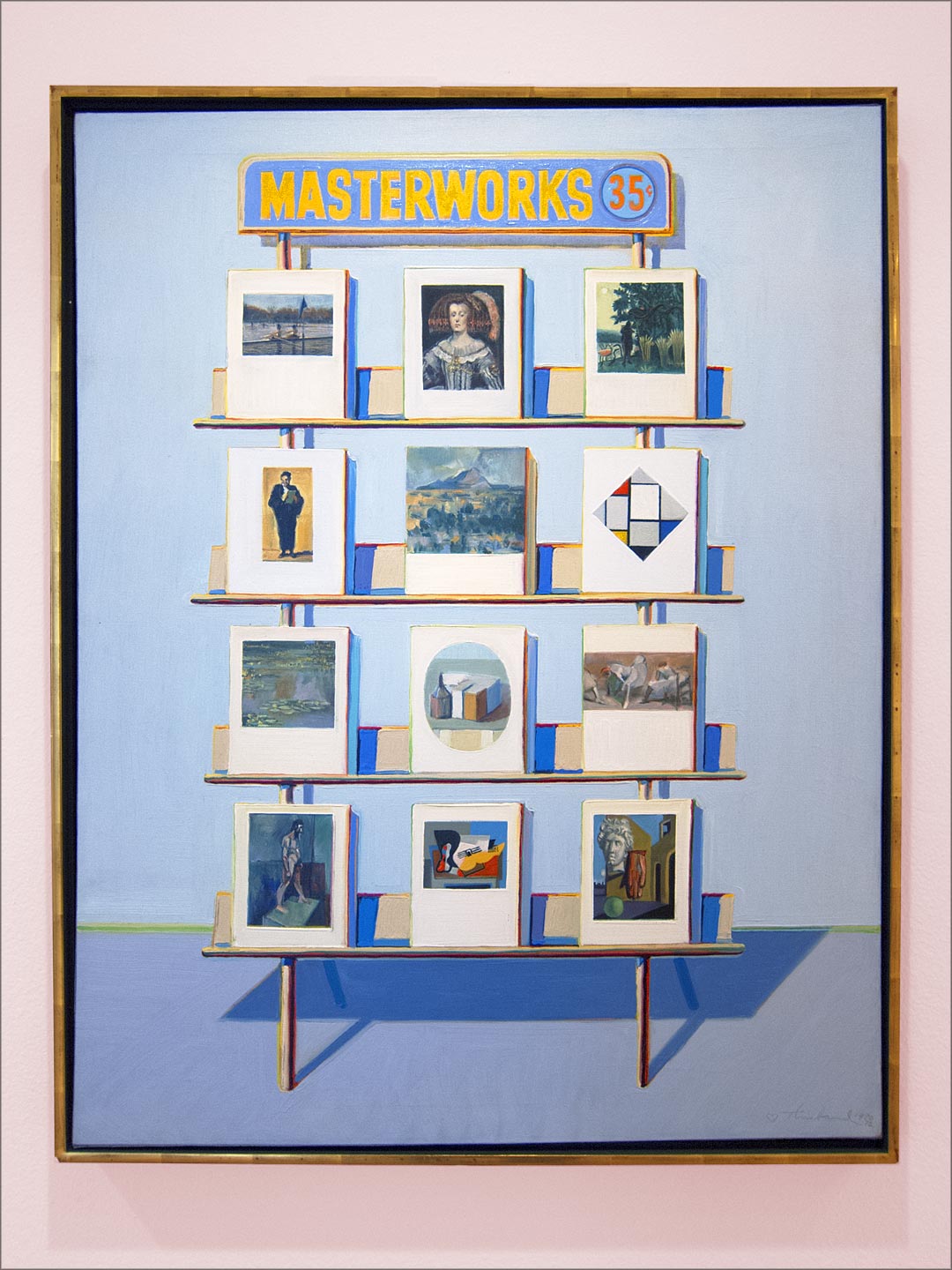 Digital-pigment print, 12"×16" Photographed at the Orange Counthy Museum of Art Gift Shop, 2008 |
35¢ Masterworks, Wayne Thiebaud, 1972
|
|||||||||
| Mike Mandel—Photographers |
||||||||||
 Digital-pigment print, 12"×16" Photographed at Landweber’s studio, 2008 |
Baseball
Photographer Trading Cards,
|
|||||||||
| Salvador Dali—Luis
Buneul, Jack Warner |
||||||||||
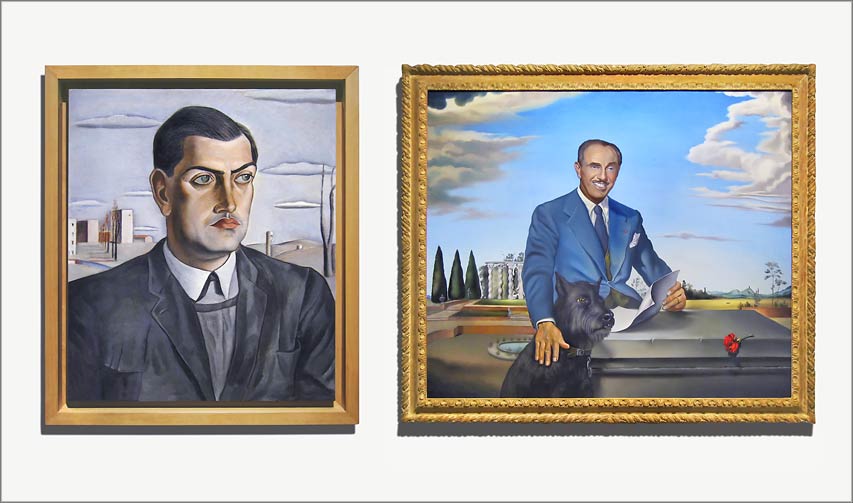 Digital-pigment print, 16"×12", 2008 |
Portraits
of Luis Bunuel and Jack Warner, Salvador Dali, 1924/1951 Dali and the Moving Image |
|||||||||
| Nicholas
Knight |
||||||||||
.jpg) Digital-pigment
print, 16"x12" Digital-pigment
print, 16"x12"Photographed at Steven Wolfe Fine Arts, San Francisco, ca. 2010 |
Taking
Pictures (Marilyn), 2007, Nicholas Knight |
|||||||||
| Andy Warhol—Robert
Rauschenberg |
||||||||||
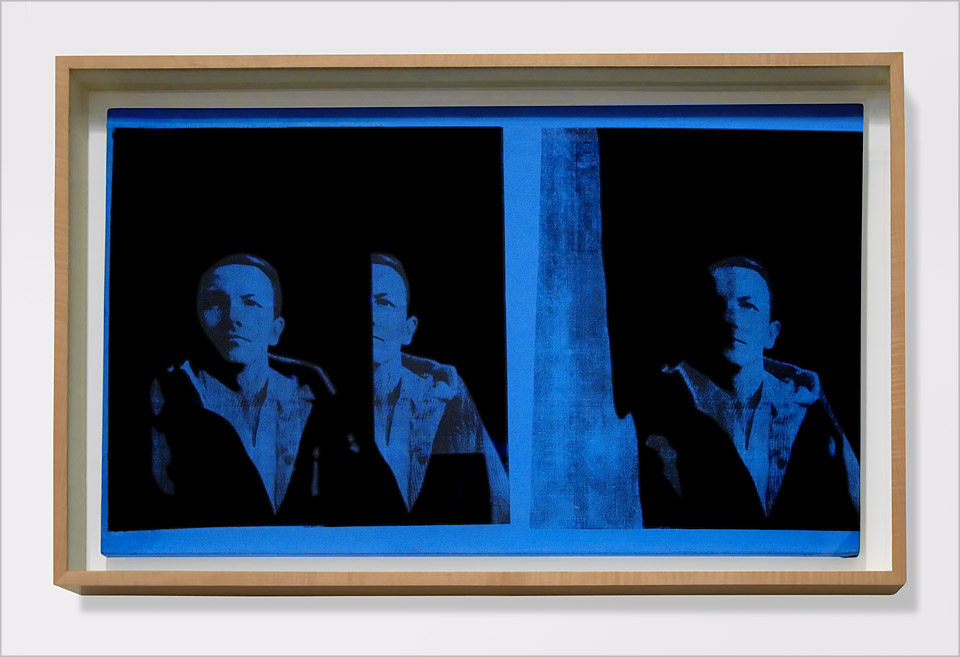 Digital-pigment print, 16"×12" Photographed at The Princeton University Art Museum, 2008 |
Triple Rauschenberg, Andy Warhol, 1964 |
|||||||||
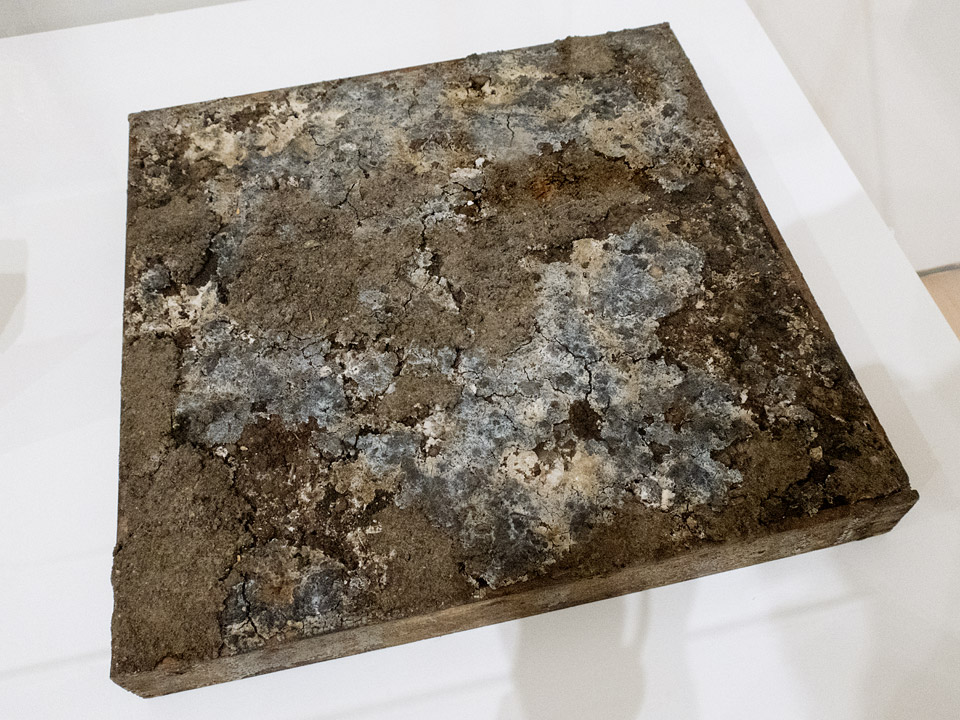 |
||||||||||
| Robert
Rauschenberg—Jean Tinguely |
||||||||||
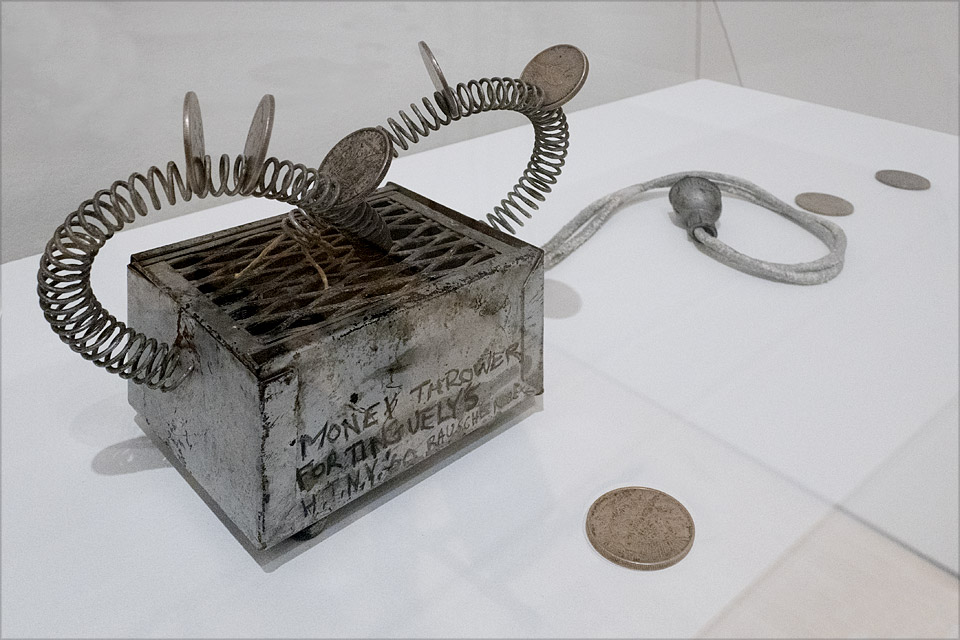 Digital-pigment print, 16"×12" Photographed at the San Francisco Museum of Modern Art, 2018 |
Money
Thrower for Jean Tinguely's Homage to New York, |
|||||||||
| Jean Tinguely—Marcel Duchamp | ||||||||||
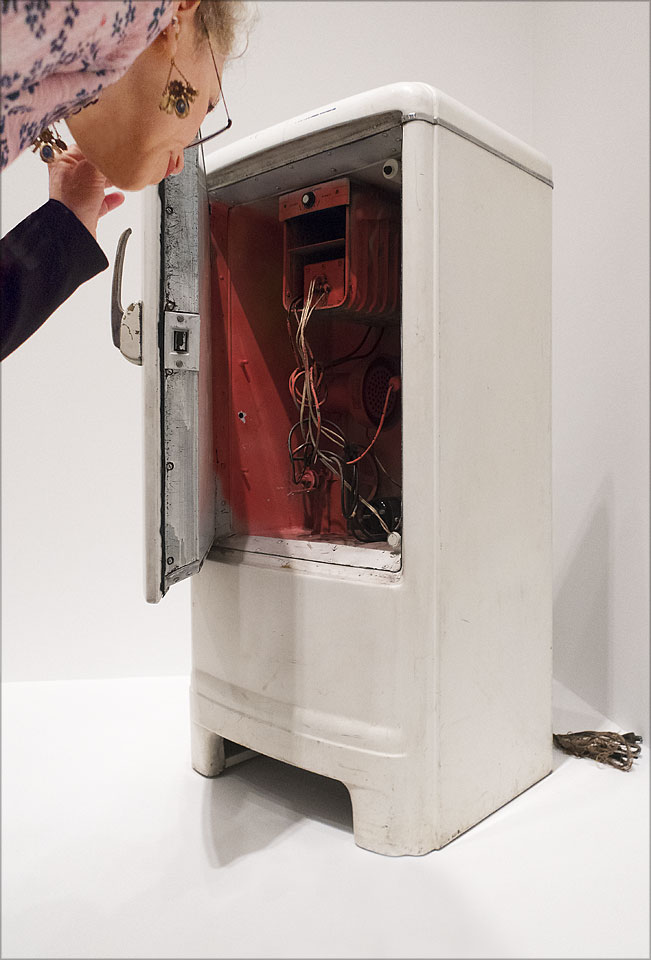 Digital-pigment print, 16"×12" Photographed at the Philadelphia Museum of Art, 2016 |
Duchamp Refrigeratgor Jean Tinguely, 1961 Frigidaire refrigerator, machine parts, two sirens, 110V electric motor |
|||||||||
| Yves
Klein—Arman (Armand Fernandez) |
||||||||||
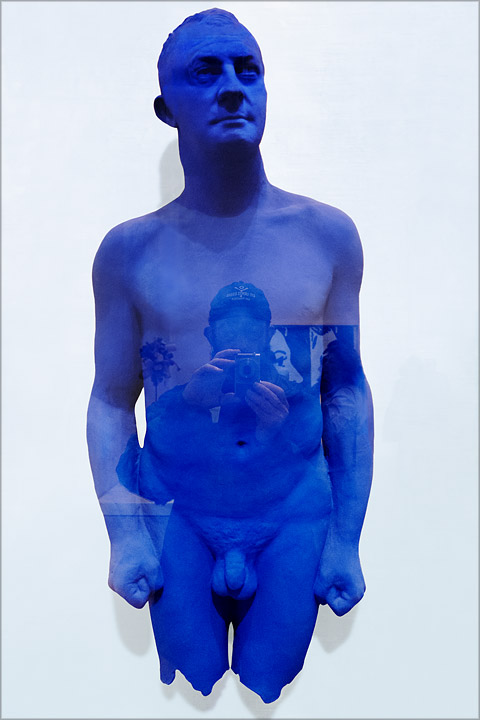 Digital-pigment print, 12"×16" Photographed at the Philadelphia Museum of Art, 2016 |
Portrait
Relief I: Arman, |
|||||||||
| Francis
Bacon—Lucian Freud |
||||||||||
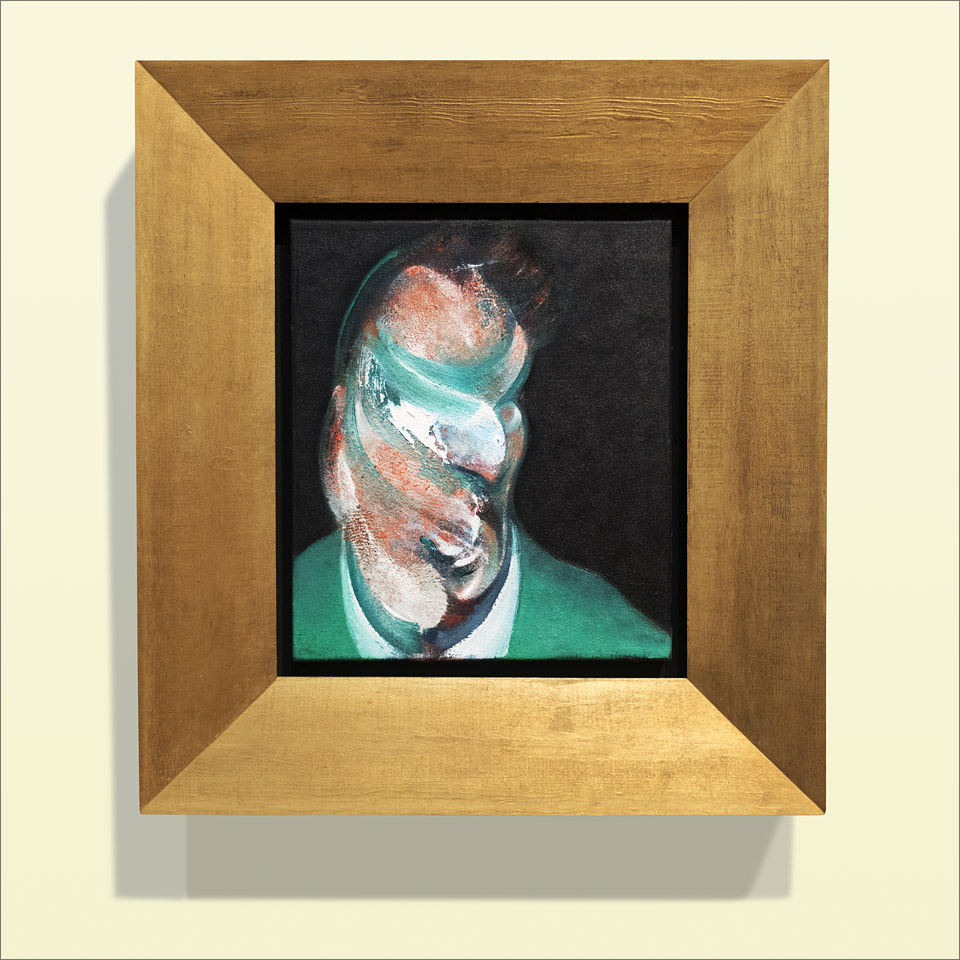 Digital-pigment print, 12"×16" Photographed at the J. Paul Getty Museum, Los Angeles, 2016 |
Study
for the Head of Lucian Freud, Francis Bacon, 1967 |
|||||||||
| Ed Mosesi—Joseph
Albers |
||||||||||
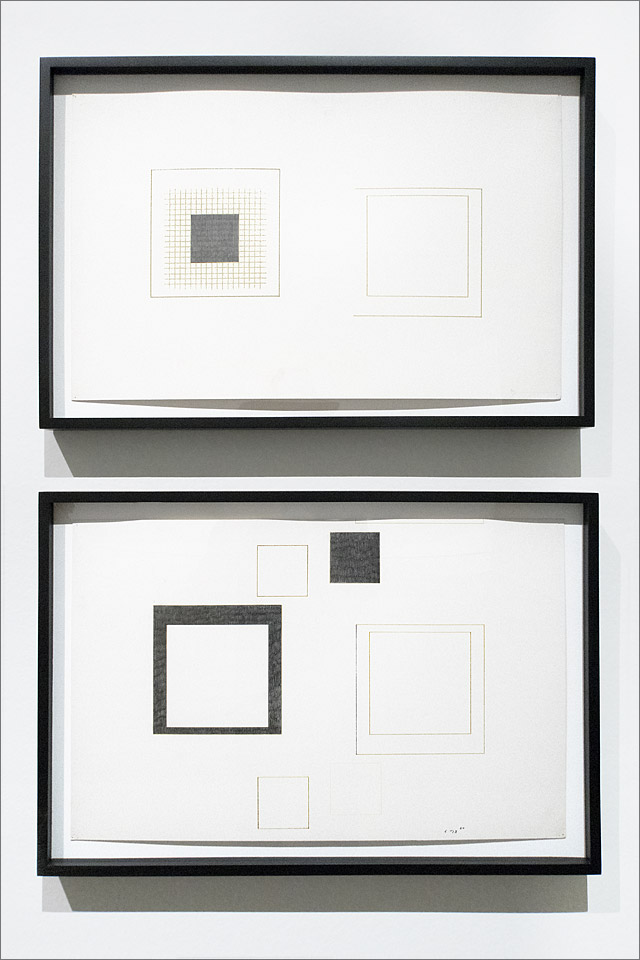 Digital-pigment print, 12"×16" Photographed at The Getty Center, 2015 |
Albers
Study #4, Ed Moses, 1967 Albers Study #1, Ed Moses, 1966 |
|||||||||
| John Baldessari—George
Kubler |
||||||||||
 Digital-pigment print, 12"×16", Photographed at Los Angeles County Museum of Art, 2008 |
Painting
for Kubler,
|
|||||||||
| Honoré Daumie—Nadar | ||||||||||
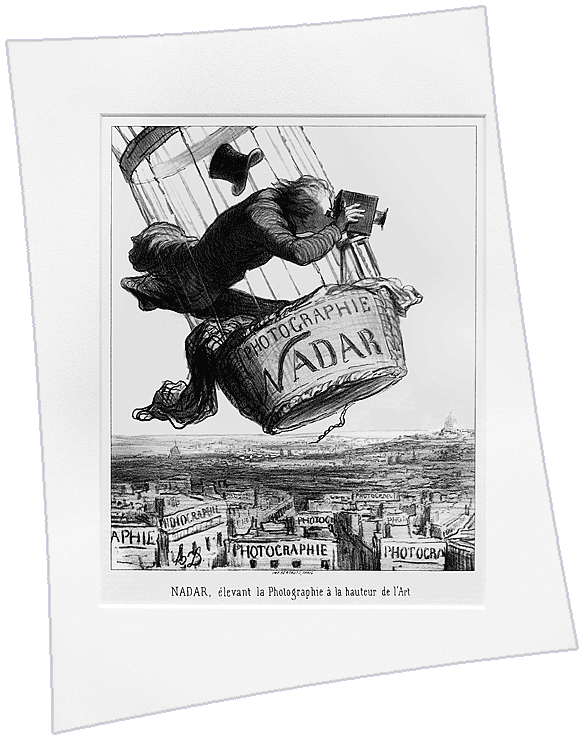 Digital-pigment print, 12"×16" Photographed at the Hammer Museum, Los Angeles, 2007 |
Nadar
Raising Photography to the Height of Art, Honoré Daumier,
1863, |
|||||||||
| Paul Strand + Charles Sheeler | ||||||||||
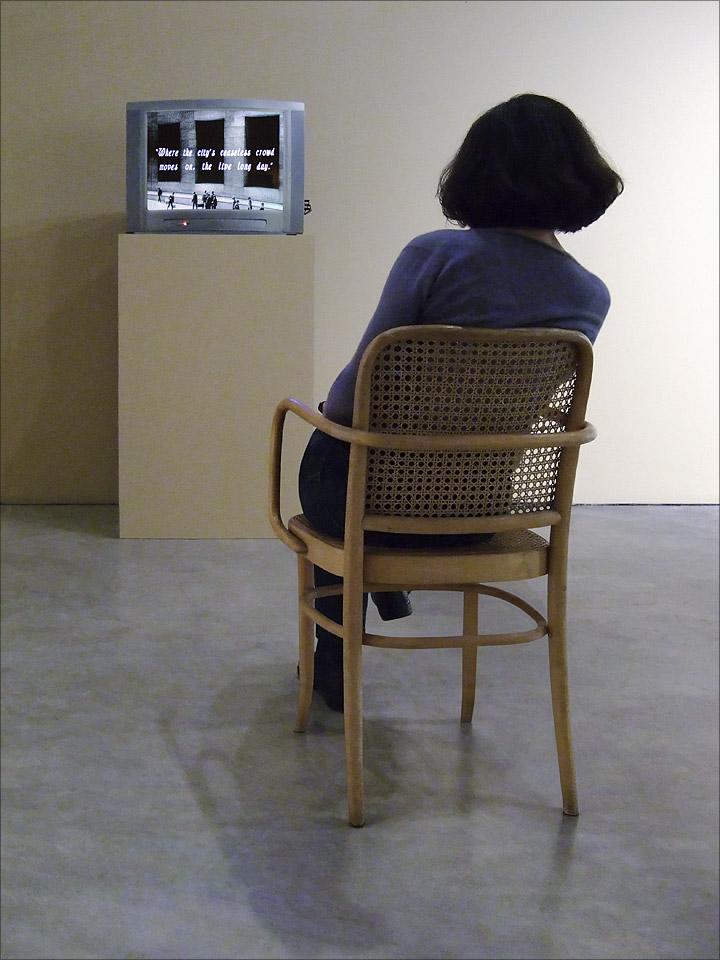 Digital-pigment print, 12"×16" Photographed at the Berkeley Art Museum, 2012 |
Manhatta, 1921,a filmic collaboration of photographer Paul Strand and painter Charles Sheeler, with excerpts from the writings of Walt Whitman. |
|||||||||
| Robert
Frank—Walker Evans |
||||||||||
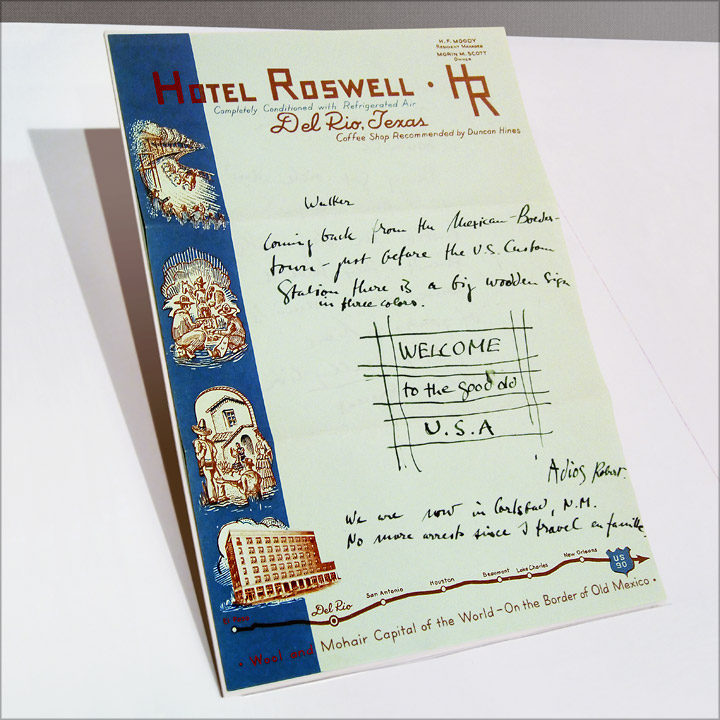 Digital-pigment print, 12"×16" Photographed at the San Francisco Museum of Modern Art, 2010 |
Letter from Robert Frank to Walker Evans, 1955 | |||||||||
| Various Photographers |
||||||||||
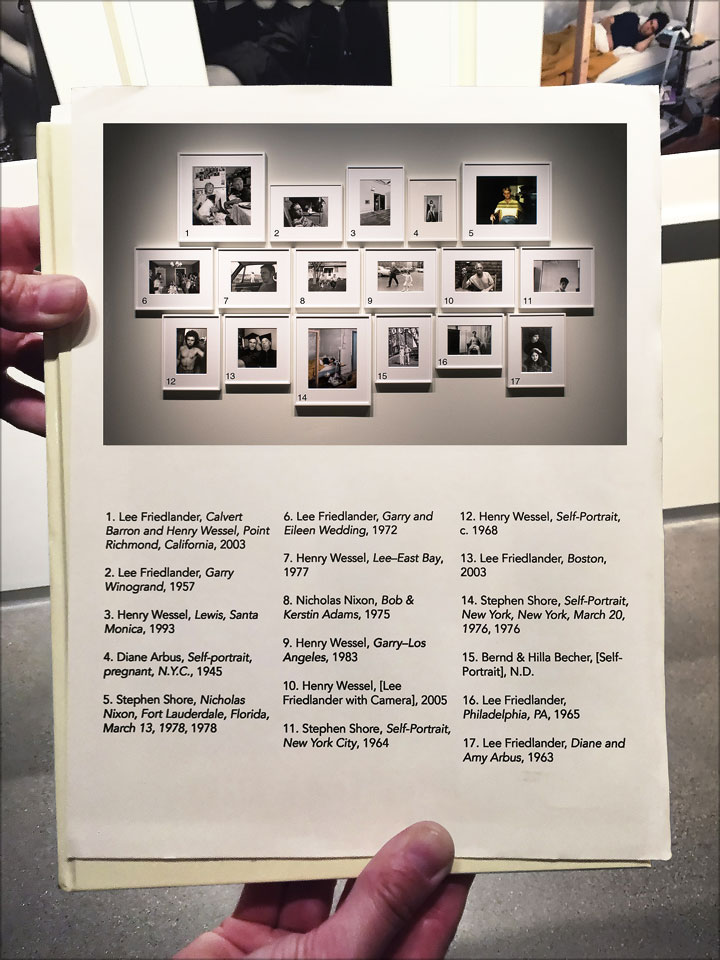 Digital-pigment print, 12"×16" Photographed at the Pilera Collection, Pier 24, San Francisco, 2017 |
Key to photograhers’ portraits at the exhibition ''The Grain of the Present,” made by the photographers whose photographs were on display at Pier 24, San Francisco. Ten photographers’ works were at the core of the exhibition—Robert Adams, Diane Arbus, Lewis Baltz, Bernd and Hilla Becher, Lee Friedlander, Nicholas Nixon, Stephen Shore, Henry Wessel, and Garry Winogrand. | |||||||||
| Diego Rivera—Frida
Kahlo, Paulette Goddard |
||||||||||
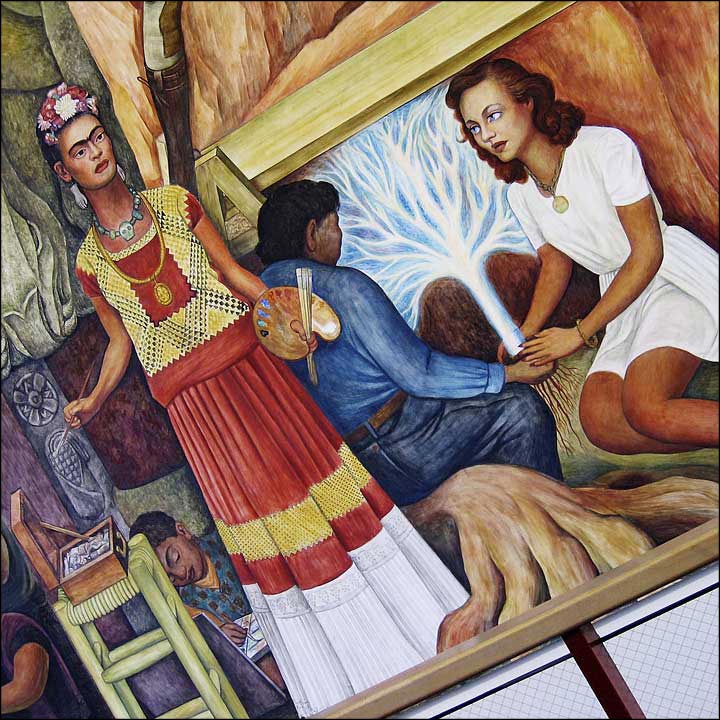 Digital-pigment print, 12"×16" Photographed at City College of San Francisco, 2006 |
American
Unity Mural, “Paulette
Goddard,” Diego said, “stands for American girlhood.” |
|||||||||
| Imogen Cunningham—Frida
Kahlo |
||||||||||
|
Portrait
of Frida Kahlo, Imogen Cunningham, 1931 |
|||||||||
| Carrie
Mae Weems—Josephine Baker |
||||||||||
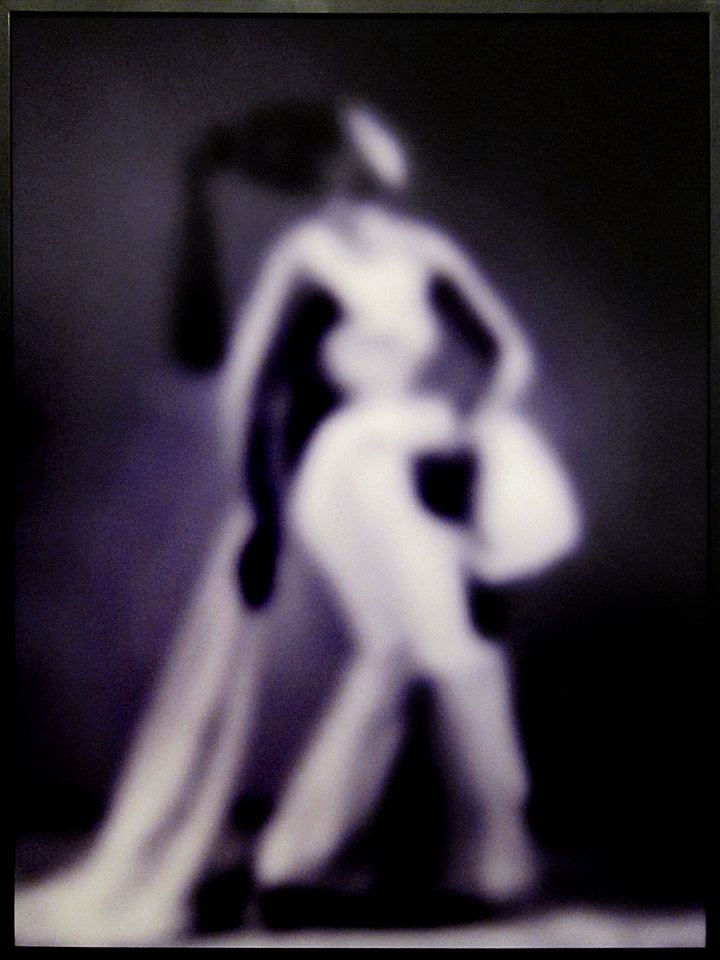 Digital-pigment print, 12"×16" Photographed at Cantor Arts Center, Stanford University, 2013 |
Josephine Baker, Carrie Mae Weems, from “Slow Fade To Black,” 2010 | |||||||||
| Robert Fichter—Edward
Weston ( |
||||||||||
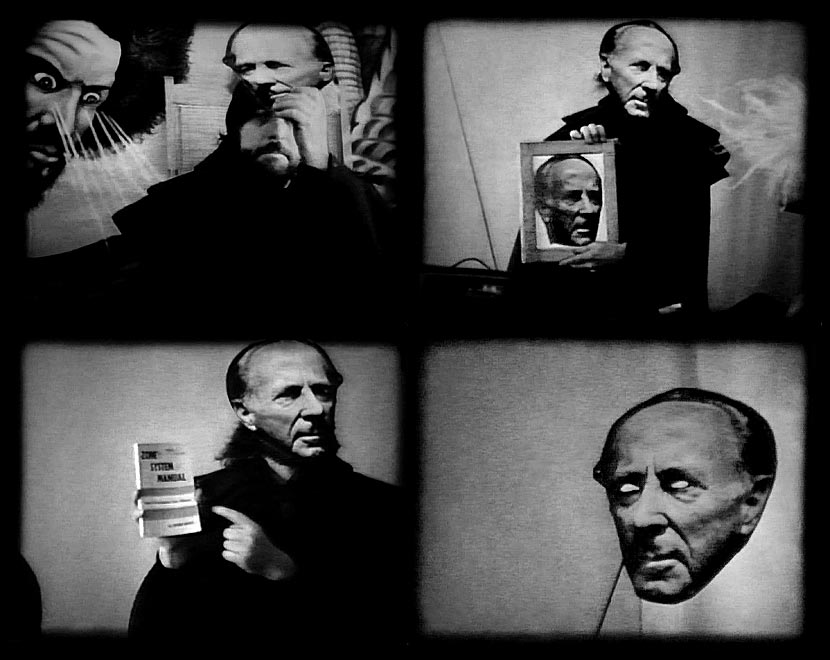 Digital-pigment print, 16"×12" Frames from the film, Whatever Happened to Edward Weston, 2007 |
Whatever
Happened to Edward Weston, a film by Robert Fichter, 1972, Weston played by Robert Heinecken |
|||||||||
| Robert
Heinecken + Joyce Neimanas—Victor Landweber (Harold Jones) |
||||||||||
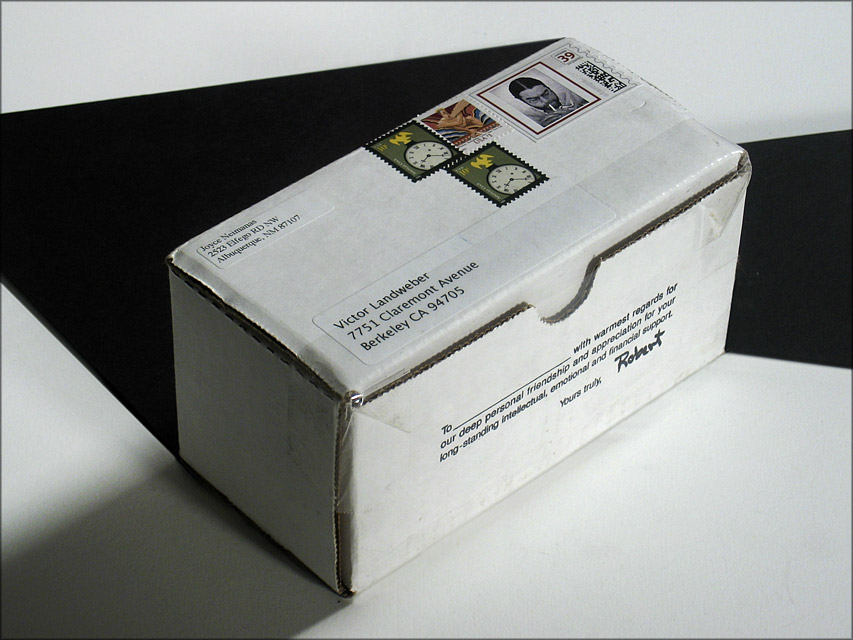 Digital-pigment print, 16"×12" Photographed at Landweber's studio, 2006 |
Posthumous
Gift from Robert Heinecken, 2006 The gift was delivered after Robert's death, May 21, 2006. Within the package is a salt shaker labeled "Residual Reality," containing a portion of Heinecken's ashes. My package remains unopened. The Heinecken postage-stamp portrait is by Harold Jones. |
|||||||||
| Ansel Adams—Victor
Landweber |
||||||||||
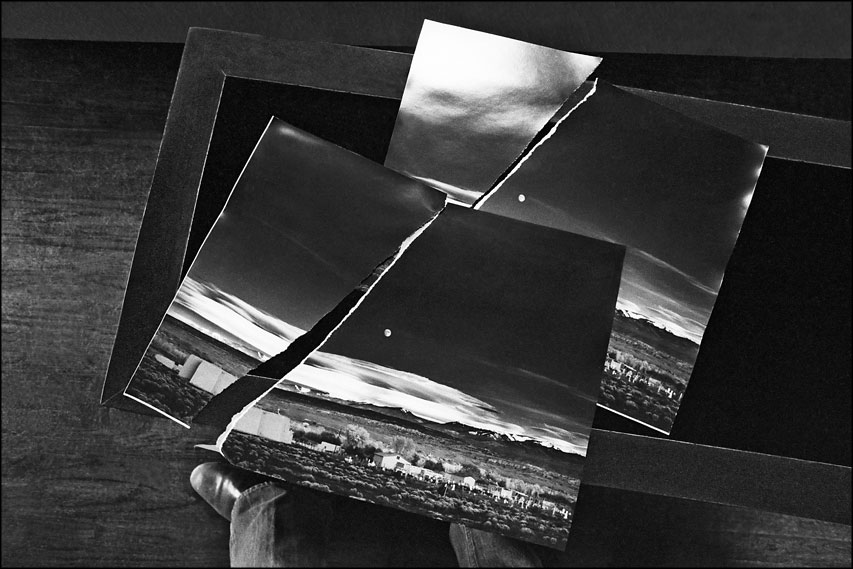 Digital-pigment print, 16"×12" Photographed at the home and studio of Ansel Adams, 1973 |
A Visit
with Ansel Adams, rejected Moonrises, 1941/1973 While Ansel and his assistants were printing Moonrise, Hernandez, New Mexico, several prints were found to have minor defects and were torn prior to being burned. |
|||||||||
|
||||||||||

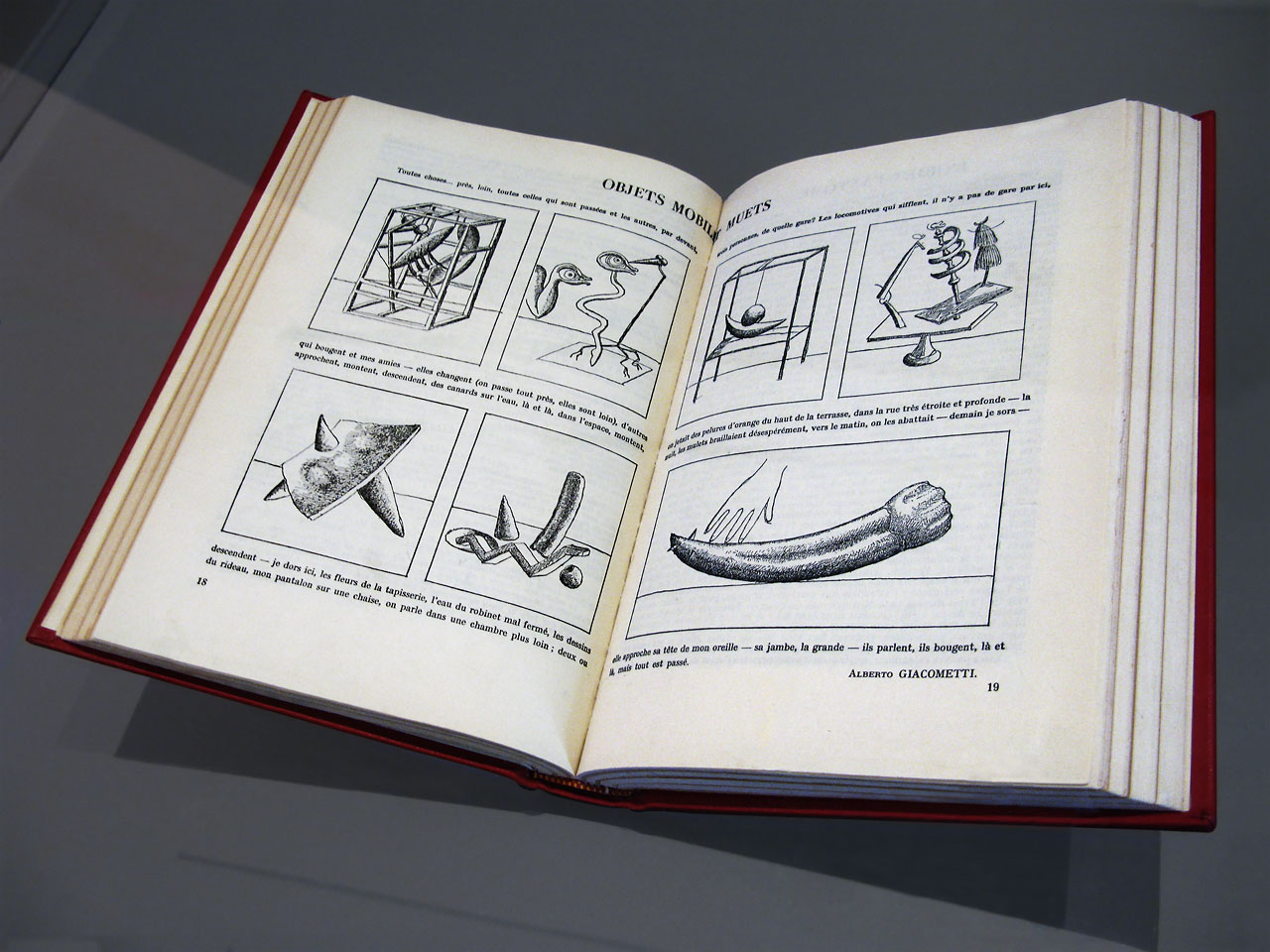
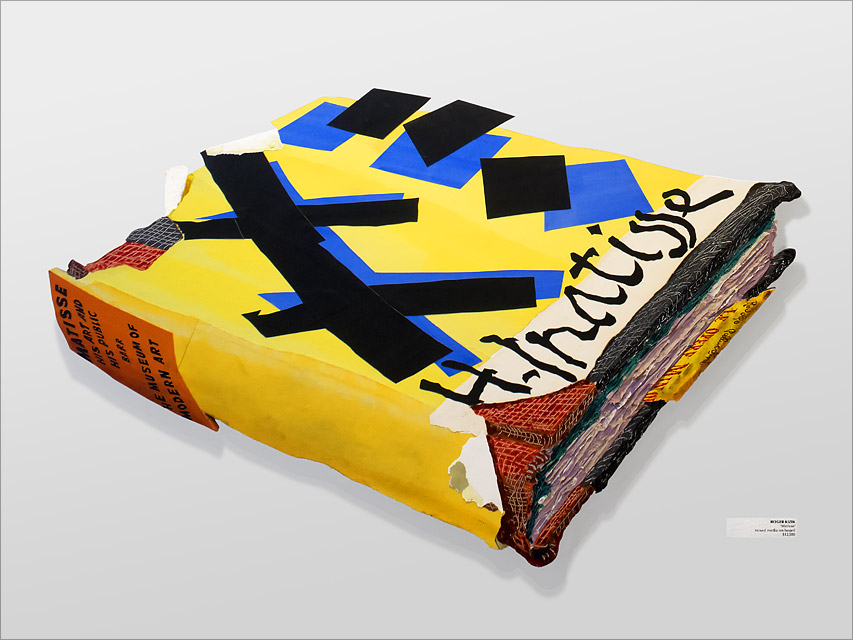 Digital-pigment
print, 16"x12"
Digital-pigment
print, 16"x12"